LONG READ – PART 4 OF FOUR PARTS (PART 1, PART 2 AND PART 3 CAN BE READ HERE): An exploration into the recent 2022 defeat of Labour in Tower Hamlets. In particular, why the party given its current mode of operating is incapable of winning competitive elections? Exploring the dynamics of a structurally dysfunctional political institution has left to a loss of support and electoral defeat for Tower Hamlets Labour.
The leadership of the Tower Hamlets Labour Party was more hung on maintaining control rather than being relevant to voters and winning elections.
Culminated in the pursuit of ill-informed policies and electoral decisions. Resulting in widespread rejection by the electorate and an electoral wipeout in 2022.
Divided into 9 parts with case studies and references.
- Regime Change: One Year On
- Definitions: Introducing UK Labour & Tower Hamlets Labour
- A brief history of the UK Labour Party
- Structures and Definitions within Tower Hamlets Labour
- Introducing the Players – Shatranj Ke Khilari (شترنج کے بازی/کھلاری): Playing the Wrong Game of Political Apathy?
- Once upon a time in India, in Lucknow…
- Once upon a time in England, in Tower Hamlets…
- The Tower Hamlets Labour Pyramid Scheme?: “Who wants to be a Councillor?”
- Welcome to the Tower Hamlets Labour Hunger Games!
- Introducing Tower Hamlets Labour Candidates? The Usual Suspects?
- Case Study of the Tower Hamlets Labour, Whitechapel Selection: Pyramid Scheme or Winning Elections?
- The Deep Paranoia of Tower Hamlets Labour: The Paranoid Android or হীরক-রাজের দেশে (In the Country of the Diamond King)
- My Journey in the Heart of Tower Hamlets Labour
- A deep dive into the Paranoid Android of Tower Hamlets Labour: A Narcissism of Small Differences or Something More?
- The Case Study of The Tower Hamlets Labour Political Thriller, ‘Puru the Newspaper Seller’.
- Introducing the Feedback Loop of Bad Faith Actors in Tower Hamlets Labour: Feeding the Paranoia
- Case Study of The Indian Emergency: Political Paranoia Never Ends Well
- The Case Study of Ahmed Chalabi and the US Invasion of Iraq: Bad Faith Actors, Rent Seekers & Political Paranoia Costs Lives
- So you still want to fix Tower Hamlets Labour?
- Get Organised!: Hire organisers to rebuild the local party from the ground up.
- Structured Tests: Put in standard employment checks to vet proposed Labour candidates
- Moving Forward with a Clear Message: Clear Break and Clear Messaging
- East End Politics Iron Man Competition: So You Still Want to be a Labour Councillor in Tower Hamlets?
- Here is the alternative: Preferring not to engage with Tower Hamlets Labour
- Building Structures outside of Tower Hamlets Labour
- Call to Action: Young & Want to Change Things but Tower Hamlets Politics Too Toxic
- Conclusion to the 4 Part Series: Counting the Costs?
- Marie Antoinette Attitude of Tower Hamlets Labour: Let them speak English or Let them ride bikes!
- Whither Tower Hamlets Labour: An End to an Ancien Régime?
- Further Reading
- Visual Essay on Apathetic Political Culture – Shatranj Ke Khilari (The Chess Players) by Satyajit Ray, 1977
- Visual Essay on Political Paranoia – Hirok Desher Raja (The Kingdom of Diamonds) by Satyajit Ray, 1980
- Visual Essays on the Culture of Corruption – The Calcutta Trilogy by Satyajit Rai
- Pratidwandi (The Adversary) (1970)
- Seemabaddha (Company Limited) (1971)
- Jana Aranya (The Middleman) (1976)
“জ্ঞান যেথা মুক্ত”
“Where knowledge is free”
Chitto Jetha Bhayshunyo (“Where the mind is without fear”) – Rabindranath Tagore
Regime Change: One Year On
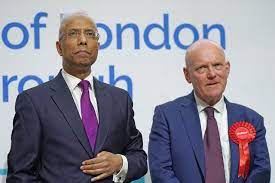
Following the stunning electoral upset of the Aspire Party of Mayor Lutfur Rahman in Tower Hamlets, Labour suffered a devastating blow that reverberated throughout the political landscape. A reverberation still felt with a near total blackout in the mainstream media and a lack of official statement or narrative from the UK Labour Party.
Fast-forward one year, and a palpable sense of disillusionment has permeated the air as we bear witness to the continued erosion of Labour’s foothold in Tower Hamlets. Indeed, upon speaking with residents and stakeholders, it has become clear that Mayor Lutfur Rahman and his Aspire Party have consolidated their position, leaving the local Labour Party further marginalized and bereft of support.
“All of you guys (Labour) come and promise the usual, parks, rubbish, ASB etc. Then just deliver on some things, not all. He has come along and put money in my pocket (free school meals), of course, I’m going to vote for him again (Mayor Lutfur Rahman).”
Resident (May 2023)
The following piece is part of four-part long read pieces, looking at the reasons for defeat and the ongoing detachment of TH Labour, who constitute the official opposition in Tower Hamlets. The pieces will cover the following four themes:
- Not understanding migrant culture in the East End
- Not understanding the Muslim community in the East End
- Not understanding the impact of inequalities on working-class communities
- Structurally incapable of operating in a competitive political environment
This essay is one instalment of a four-part examination into the multifaceted reasons for the electoral defeat of the Tower Hamlets Labour Party, as well as the ongoing sense of detachment that has continued to plague this organisation. As the official opposition, the Labour Party’s continued failures and missteps have raised serious questions about their relevance and efficacy within the local political landscape. Through a comprehensive analysis of the factors that contributed to their downfall, we can begin to unpack the complex and nuanced issues that have led to their disarray. As well as possible pathways to regain the trust of residents in Tower Hamlets.
Let us kick off the fourth and final in the series, the structural inability of Tower Hamlets Labour to win competitive local elections. A political party or something else?
Definitions: Introducing UK Labour & Tower Hamlets Labour
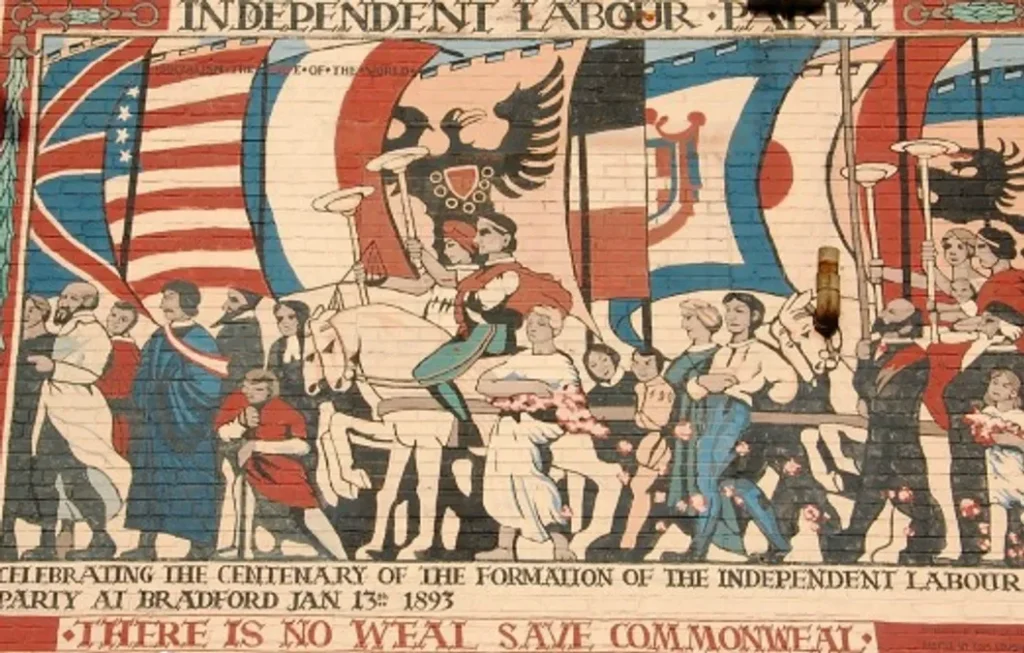
A brief history of the UK Labour Party
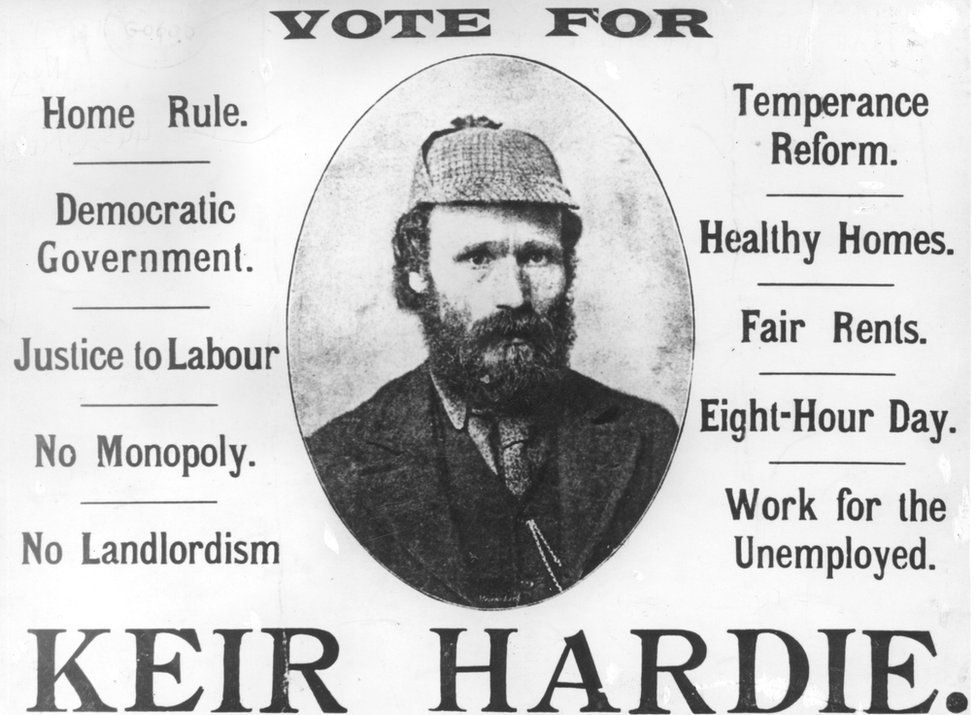
The inception of the UK Labour Party in 1900 heralded a seismic shift in the political landscape, as the voice of the working class found resonance within the corridors of power. Emboldened by the burgeoning trade union movement and socialist organisations, the party sought to challenge the entrenched dominance of the Conservative and Liberal parties. Their emergence was not without consequence, as the 1906 general election yielded a notable triumph, bestowing upon Labour 29 parliamentary seats and catapulting them into the realm of political relevance.
Interwar Years
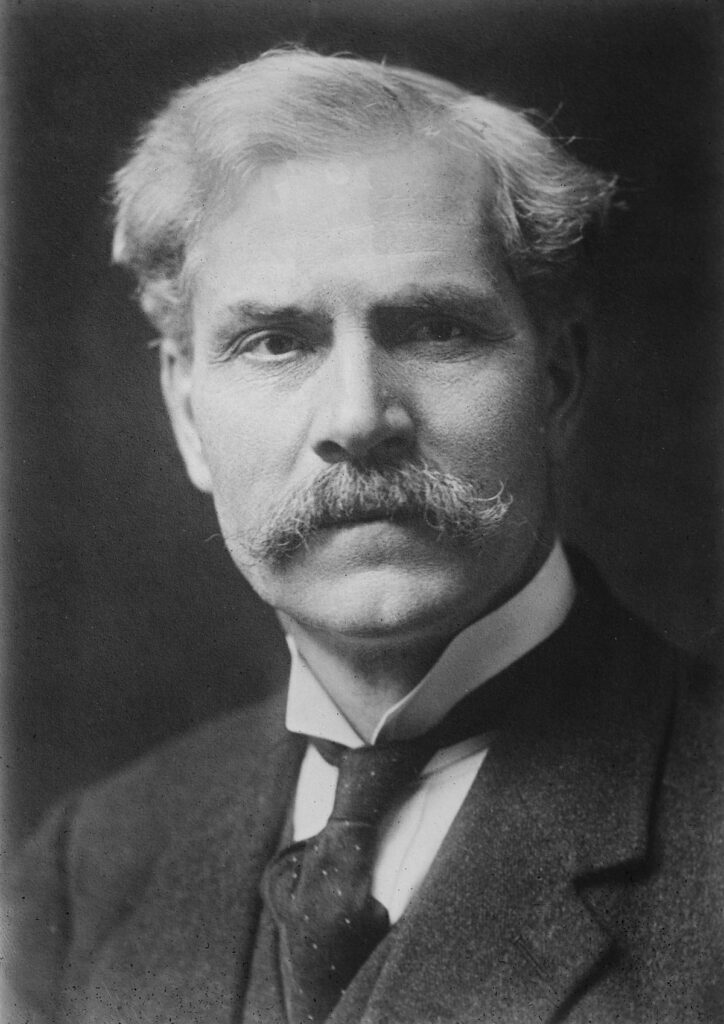
The aftermath of World War I witnessed a watershed moment in British democracy, with the Representation of the People Act 1918 ushering in expanded suffrage, encompassing not only the male working class but also women over the age of 30. Against this backdrop of societal transformation, the Labour Party endeavoured to consolidate its foothold. In 1922, the party clinched its first-ever majority in a general election, instilling hope in the hearts of its ardent supporters. Yet, the journey to governance was arduous, beset by economic volatility that plagued the interwar years.
The Labour Party, under the stewardship of Ramsay MacDonald, etched an indelible mark on history when, in 1924, it achieved the seemingly improbable: forming a minority government. This historic milestone was a testament to the party’s unwavering resolve and the palpable desire for change sweeping across the nation. However, the challenges of governing in a climate of economic instability proved formidable, compelling Labour to navigate treacherous political waters.
As the spectre of the Great Depression cast a sombre pall over the nation, Labour’s mettle was tested. Internal divisions threatened to undermine the party’s cohesion, culminating in a schism in 1931. The breakaway faction birthed the National Government. This fracturing of the left further complicated an already intricate political landscape.
Post-Second World War

The post-World War II era witnessed a seismic recalibration of societal norms, as the nation grappled with the aftermath of the devastating conflict. In a resounding victory in the 1945 general election, Labour, led by the indefatigable Clement Attlee, assumed the mantle of power, embarking upon an ambitious program of social reform. The establishment of the welfare state, the nationalisation of key industries, and the advent of the National Health Service (NHS) became hallmarks of Attlee’s transformative agenda. Yet, the euphoria of change was ephemeral, as Labour’s electoral fortunes waned in 1951, surrendering power to the Conservatives.
Undeterred by their political exile, Labour persisted, navigating the oppositional waters. The mid-20th century witnessed a mélange of leaders, from Hugh Gaitskell to Harold Wilson, who steered the party through the labyrinthine maze of ideological debates and internal restructuring. The Wilson era, particularly the Labour governments of 1964 and 1966, left an indelible imprint on the nation, with notable social reforms such as the liberalisation of abortion laws and decriminalization of homosexuality, emblematic of the zeitgeist.
As the party grappled with both internal and external challenges, economic headwinds and divisions within the trade union movement, the Conservative Party’s ascendancy in 1970 seemed an unassailable blow to Labour’s aspirations. However, a political phoenix arose from the ashes in 1974, as Harold Wilson steered Labour back into the echelons of power. Alas, the honeymoon was short-lived, as economic strife and internal schisms unravelled the fabric of James Callaghan’s government, culminating in a vote of no confidence in 1979 and a subsequent general election defeat.
New Labour Years
In a bid to reclaim the political centre ground, the Labour Party underwent a profound metamorphosis in the 1990s. Tony Blair’s stewardship marked a departure from traditional socialist principles, heralding the advent of “New Labour.” Embracing a more centrist agenda, Blair’s leadership propelled the party to victory in three consecutive general elections, accentuating the need for modernisation, economic stability, and social justice. The minimum wage, devolution in Scotland and Wales, and heightened investment in public services became defining features of this transformative era.
Post-New Labour
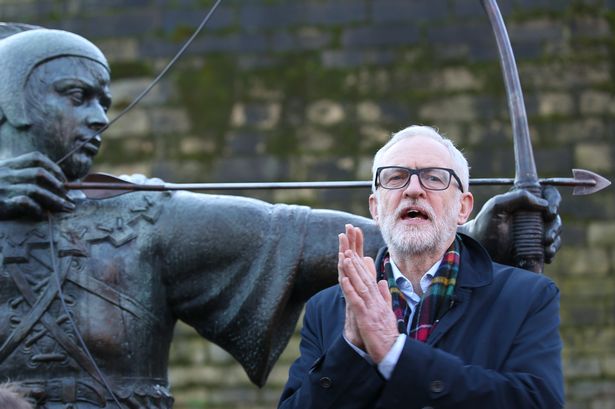
The recent annals of Labour history have been punctuated by electoral challenges and internal fissures, as successive leaders, including Ed Miliband, Jeremy Corbyn, and Keir Starmer, grappled with the complexities of a rapidly evolving political landscape. Brexit’s seismic shockwaves reverberated within the party, further exacerbating ideological divisions and the quest for a unifying vision.
The UK Labour Party’s century-long trajectory bears testament to the perpetual struggle to reconcile disparate interests, navigate shifting tides, and articulate a vision that resonates with a diverse electorate. Its successes and setbacks have left an indelible imprint on the political tapestry of the nation, a testament to the enduring nature of democratic discourse and the ceaseless quest for a fairer society.

Structures and Definitions within Tower Hamlets Labour
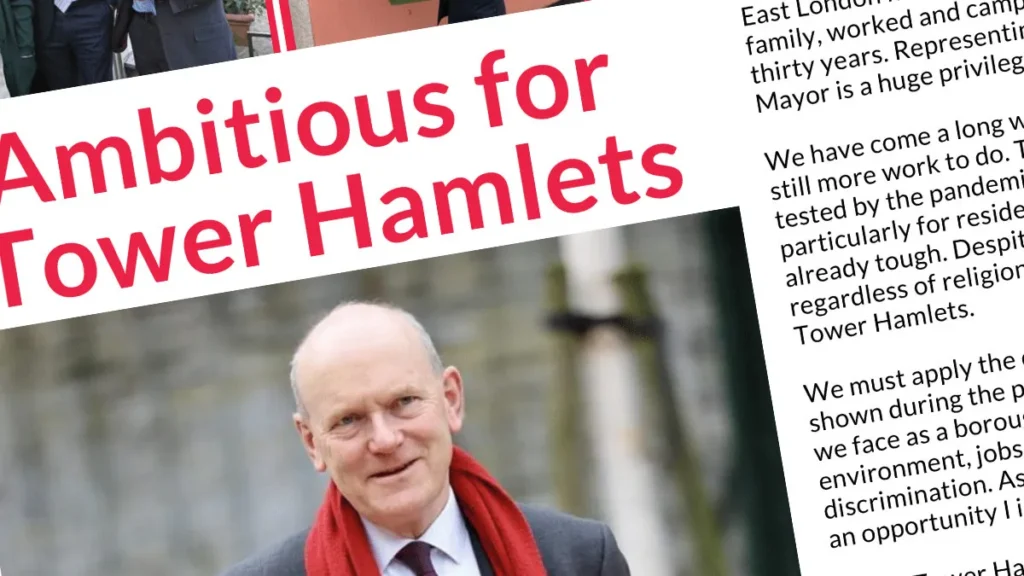
In theory, the structures to facilitate internal democracy, shape party policies and coordinate local campaigning, are further fragmented at a local level in Tower Hamlets. Allowing the Labour Party to operate at a local government level as opposed to a national level.
These will change once the boundary changes come in July 2023. Therefore, after July 2023, it’s advisable to consult the latest information from the party itself. These structures are:
Labour Group: the collective of Labour Councillors in any given local authority. In terms of Tower Hamlets council, this is the Tower Hamlets Labour Group.
Local Labour Party: Also known as CLPs (Constituency Labour Party). In terms of Tower Hamlets, we have two CLPs. Bethnal Green and Bow CLP and Poplar and Limehouse CLP.
Tower Hamlets Labour: Is made up of both CLPs and the Tower Hamlets Labour Group. The Tower Hamlets Local Campaign Forum (LCF) acts as the main interlocutor between the CLPs and the Labour Group.
Now that we have a rough map of the labyrinthine structures of the Labour Party nationally, and locally as Tower Hamlets Labour, let us have a look at the existential questions it faces today in Tower Hamlets. Tower Hamlets Labour, a political party or something else?
What is the Purpose of a Political Party? To Win Power?

During my tenure in the realm of commercial real estate, a striking memory lingers, one involving a business partner, a seasoned octogenarian immersed in the world of currency trading. Nestled in the suburbia of North London, a sprawling living room had undergone a metamorphosis, its purpose transformed into a bustling trading office. My visit was to orchestrate bridging finance for a proposed venture.
As we sat to conduct business negotiations in the Bengali tradition, our discourse took an intriguing detour, wandering through the vast expanse of topics, avoiding the imminent matter at hand. Curiously, I couldn’t help but draw parallels with the Middle Eastern ethos, wherein the primacy of relationships supersedes the numerical constructs permeating any given proposition. It was towards the culmination of our interaction that we collectively addressed this resonant facet.
Unfurling recollections of his nascent years as a young émigré in Britain during the early 1960s, he narrated a pivotal moment that catapulted him towards an epochal shift. A seminar on commerce was held under the roof of Harrod’s Department Store at the time. That attendance at the seminar, heralded an epiphany that would irrevocably shape the trajectory of his life, eventually culminating in the ascendancy of his multi-million-pound empire.
It all commenced with a single, piercing query directed towards the attendees: “What is the purpose of business?” At that juncture, his body subtly swivelled, a mimetic gesture reminiscent of the Harrod’s lecturer, as he intoned, deliberately, “To make money.”
Indeed, akin to the raison d’être of a political party, the very essence of its existence lies nestled within the pursuit of power at the ballot box. This conspicuous reality finds resounding resonance within the realm of American politics, wherein the traditional conception of political parties is rendered obsolete, devoid of formal memberships or localised structures. Instead, two distinct entities materialise exclusively during elections, coalescing with a constellation of donors and campaigners to propel their chosen standard-bearers towards the triumphant realm of the ballot box.
Casting my gaze back upon my tenure as a Councillor for Tower Hamlets Labour, spanning the years from 2018 to 2022. It appears that the leadership and the cultural ethos perpetuated therein have succumbed to collective amnesia regarding this elemental purpose. Such an alarming dereliction of duty has spawned an insidious rot, permeating the very fabric of the organisation, rendering it impotent and electorally dysfunctional. Unless these grave concerns are addressed with utmost expediency, the spectre of 2022’s tribulations looms large, poised to be replicated or, God forbid, even exacerbated in the forthcoming 2026 elections.

So what is this culture that has fostered the electoral rot within Tower Hamlet’s Labour?
Introducing the Players – Shatranj Ke Khilari (شترنج کے بازی/کھلاری): Playing the Wrong Game of Political Apathy?

In 1924, the Indian author Munshi Premchand unveiled his seminal short story “Shatranj Ke Khilari”, on political apathy, to the literary world. Penned in Hindustani, with versions in both Hindi and Urdu script, this masterwork resonated with readers across the Indian Subcontinent. Hindustani, serving as the lingua franca of the region, continues to hold sway in the present day as the language of choice for Bollywood cinema. Premchand, a literary luminary of his time, stood as one of the pioneers in adopting realism as his genre of choice, delving into the trials and tribulations of the destitute within his narratives.
Once upon a time in India, in Lucknow…
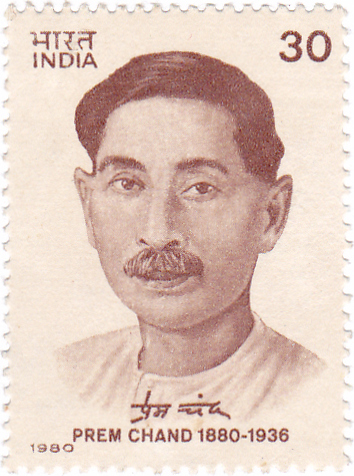
The 1920s witnessed a profound shift in Premchand’s artistic sensibilities, profoundly influenced by the non-cooperation movement spearheaded by Mahatma Gandhi. Aligned with this zeitgeist of social reform, Premchand’s oeuvre at the time scrutinised a wide spectrum of pressing social issues. From the scourge of poverty (as deftly illustrated in “Premashram” in 1922) to the exploitative machinations of the zamindari system. Premchand fearlessly confronted the ills that plagued his society. His literary canvas further expanded to encompass themes of dowry, educational reform, political oppression, and the economic exploitation endured by the rural underclass (exemplified in “Karmabhoomi” in 1931 and “Nirmala” in 1925, respectively).
In “Shatranj Ke Khilari,” Premchand adroitly tackled the political apathy festering within the Indian elite during the pre-Independence era. Against the historical backdrop of the 1856 annexation of Awadh, a northern Indian state, by the East India Company, Premchand wove a narrative that exposed the detachment and indifference of the ruling class. Remarkably, this literary gem would later be translated onto the silver screen by the visionary director Satyajit Ray in 1977. Ray, in his cinematic adaptation, skilfully captured not only the political apathy depicted by Premchand but also extended his critique to encompass the Indian National Congress under the leadership of Indira Gandhi. The synchronicity of events was uncanny, as it was in that very year that Indira Gandhi experienced an overwhelming electoral defeat, resulting in her ignominious removal from office.
Once upon a time in England, in Tower Hamlets…
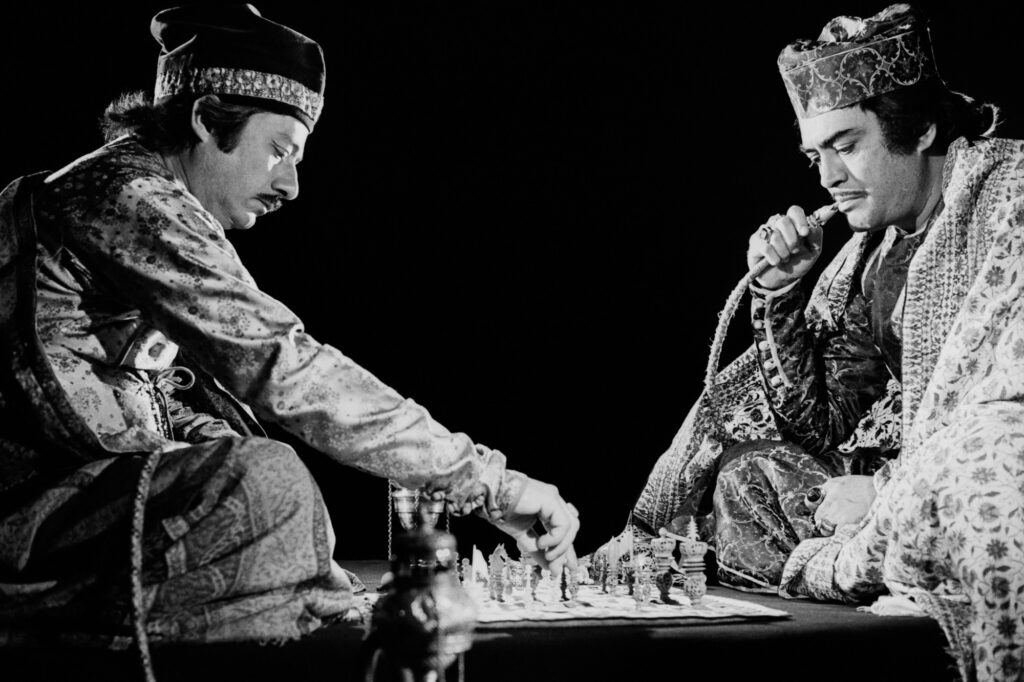
Returning to the present-day context of Tower Hamlets, we find ourselves enmeshed in a political drama that mirrors the intricacies of a chess game. Between the years 2018 and 2022, the leadership of the Tower Hamlets Labour Party became embroiled in an arcane and self-absorbed chess match, oblivious to the single-minded quest for electoral dominance spearheaded by Mayor Lutfur Rahman and his Aspire Party. While the party’s upper echelons were engrossed in a spectacle of apathetic musical chairs, ensconced within the halls of the Town Hall, jockeying for coveted cabinet portfolios, committee appointments, and advisory posts. Mayor Rahman astutely orchestrated a real-life game of chess on the streets of the borough, methodically capturing one centre of power after another.
The year 2019 witnessed a pivotal turning point as Aspire Party clinched victory in the fiercely contested Shadwell by-election, championing the cause of the Community Language Service. As the ravages of the pandemic wreaked havoc throughout 2020, Aspire, demonstrating its unwavering commitment to the community, established an extensive network of food banks, meticulously delivering essential provisions to vulnerable residents across the borough.
Except for my own efforts and occasional assistance from Councillor James King in Limehouse, none of the other Labour councillors took the initiative to establish Covid-19 support networks in their respective areas. Instead, they opted to rely on the guidance provided by Tower Hamlets Council and allowed Aspire to establish a comprehensive support network across the entire borough. This strategy proved beneficial during the 2022 elections, as Aspire gained significant popularity throughout the rest of the borough. However, I have received information indicating that only Mile End and Limehouse experienced an increase in the Labour vote.

This network, astutely leveraged as a breeding ground for dedicated activists, would later prove instrumental in pivoting towards the realm of electoral politics. The year 2021 ushered in a momentous juncture as Tower Hamlets Labour Party, despite my solitary dissenting voice of opposition, recklessly initiated an unnecessary referendum on the Mayoralty. Unbeknownst to them, this ill-conceived move inadvertently played into the hands of Mayor Rahman, enabling him to mobilise these activists, previously engaged in pandemic relief efforts, towards a formidable electoral campaign. The ensuing triumph in the referendum galvanised Aspire Party’s credibility, compelling the electorate to take notice. Buoyed by this newfound momentum, Aspire Party secured victory in the Weavers by-election later that same year, consolidating their presence in the traditionally Labour-strong wards situated in the borough’s northern reaches.
As the year 2022 unfurled, Tower Hamlets Labour Party remained mired in internal wrangling, embroiled in heated debates over councillor candidacy. In stark contrast, Aspire Party, imbibing crucial lessons from the resounding success of the 2020 Biden Campaign, adroitly instituted a sophisticated phone banking operation. Directly engaging with residents, fostering genuine connections with voters, this strategic outreach initiative exerted an undeniable influence on election days. With remarkable efficacy, the campaign swayed votes within critical demographics, particularly among the youth and women.
This high-stakes game of electoral chess played out in Tower Hamlets finds Mayor Rahman assuming the role of General Outram, employing a tactical acumen reminiscent of the renowned military strategist. In this riveting political drama, Rahman’s Aspire Party assumes the mantle of the relentless and single-minded East India Company army, committed to its unwavering mission. Meanwhile, the Tower Hamlets Labour Party unwittingly embodies the detached and decadent royal court of Awadh in Lucknow, characterized by their aloofness and vulnerability. As Richard Attenborough, the distinguished actor who portrayed General Outram, acerbically described it, the leaders of Awadh resembles a “Nautch Girl”—an alluring yet vulnerable courtesan, ripe for exploitation and conquest.
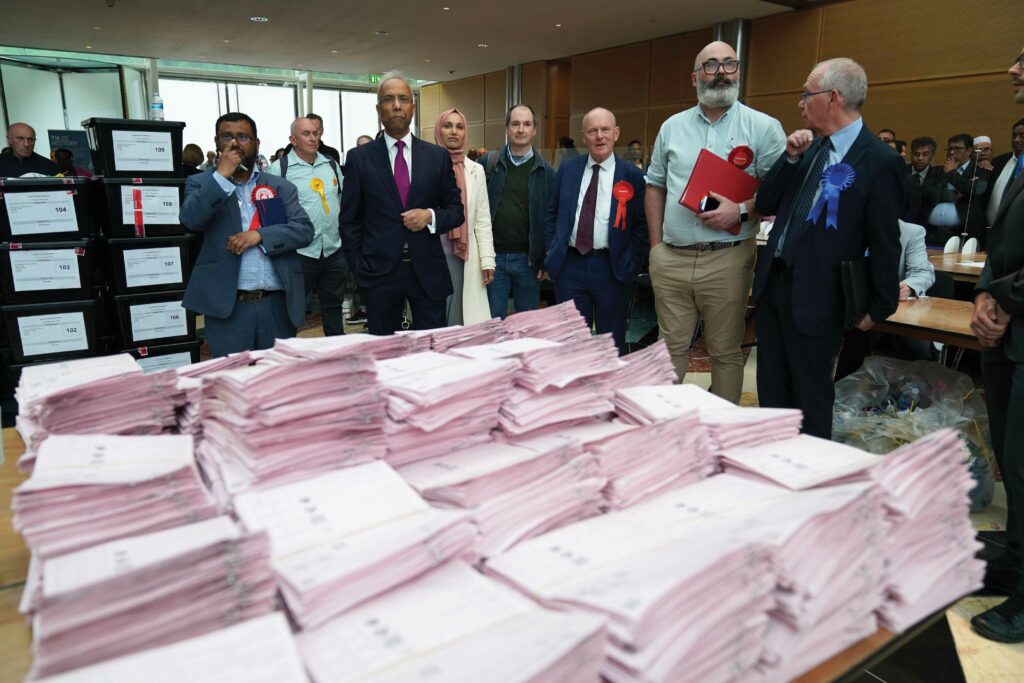
The unabated air of detachment and apathy persisted unabated, both leading up to and on the much-anticipated election day. A mere week before the pivotal moment, I took it upon myself to place a phone call to a friend stationed at Labour Party HQ, sounding the alarm bells regarding Tower Hamlets’ imminent loss. The response I received was as disheartening as it was confounding. It was relayed to me that Tower Hamlets Labour, in all their unwavering confidence, had assured the party brass of an overwhelming triumph, thereby prompting them to divert their precious resources to other battlefronts. Even after the polls had closed on that fateful day, I found myself embroiled in a marathon debate within the confines of a fellow councillor’s home. Armed with a plethora of empirical evidence, I laboriously endeavoured to convince my companion of our electoral defeat.
Thus, the political apathy, rather distressingly, endures well beyond the conclusion of the electoral affair. The Tower Hamlets Labour Group, notorious for its calamitous orchestration, disseminates press releases marred by the most elementary mathematical inaccuracies and spelling blunders. Regrettably, their engagement with party members remains alarmingly lacklustre, with their reliance on the antiquated pyramid scheme of luring unsuspecting individuals into the murky realm of local council representation—a charade akin to a parlour game of “Who Wants to be a Councillor?”
Further Reading
Mutual Aid groups and Covid-19: a grassroots demand for social insurance. Puru Miah -16/04/2020
A Meltdown of the Tower Hamlets Labour Group? Puru Miah – 13/05/2023
The Tower Hamlets Labour Pyramid Scheme?: “Who wants to be a Councillor?”

A pyramid scheme is a fraudulent business model that involves recruiting people and focusing on recruiting more participants rather than selling real products or services. Participants make an initial investment and are promised high returns or rewards for recruiting others. However, pyramid schemes are unsustainable and collapse, leaving most participants at a loss while benefiting only those at the top. They are illegal in many countries due to their deceptive nature and reliance on constant recruitment.
Tower Hamlets Labour in East London, has adopted this rather dubious strategy to sustain its dominance. Akin to the discredited realm of pyramid schemes, their modus operandi unveils a complex web of promises, limited opportunities, and political manoeuvring.
Welcome to the Tower Hamlets Labour Hunger Games!

Within the chamber of Tower Hamlets Council, a mere 44 coveted councillor positions stand as the pinnacle of influence. However, as the upcoming round of selections looms on the horizon, the labyrinthine dynamics of Labour politics reveal a precarious scenario. Incumbent Labour councillors, seeking re-election, coexist with electoral battlegrounds where victory seems an uphill struggle, leaving only a scant number of seats available for fresh faces.
Instead of embracing transparency and engaging in astute seat targeting, accompanied by a cultivation of candidates and bolstering local branches, the Tower Hamlets Labour leadership opts for a treacherous path resembling a pyramid scheme. With a ubiquitous presence, they make grandiose promises to an eclectic array of individuals, enticing them with the alluring prospect of attaining councillor status. Alas, the bitter reality emerges—only a select few will find themselves blessed with this coveted placement.
The consequence? An unsustainable assemblage of activists enlisted for menial tasks, from leafleting the streets to tireless door-knocking campaigns. While the Tower Hamlets Labour leadership basks in the fruits of free labour and presents an outward façade of zealous activism, the ramifications of this false promise infiltrate the very core of the local party.
Emanating from this deceitful ploy, an atmosphere of ruthless competition descends upon the local party, as aspirants vie for the limited spaces available. Factions emerge, fortifying their positions in a desperate bid to secure the scarce councillor roles. Regrettably, the quest for these esteemed positions unfolds through a landscape marred by vexatious complaints, strategically aimed at eliminating adversaries and stifling genuine competition.

Political education, that pursuit of intellectual enrichment and ideological grounding, finds itself forsaken amidst the chaos. The party’s magnetic pull is no longer rooted in the nurturing of principled activists but rather in a culture of opportunism and rhetorical sleights of hands. Authentic political engagement is smothered by the cacophony of rent-seeking individuals, whose sole aim is personal gain. Consequently, the quality of the councillor candidate pool diminishes, leaving a dearth of visionary candidates capable of steering Tower Hamlets Labour towards its true potential.
As the Tower Hamlets Labour leadership revels in the exploitation of fervent volunteers and seeks solace in the guise of activism, the true consequences of this deceptive pyramid scheme-like strategy emerge. In this realm of cut-throat ambition, the integrity of the local party wanes, and the very foundations of democratic engagement tremble under the weight of self-serving motives.
Instead of a political institution based on solidarity and collectivism, what we end up with is the hunger games, with the wrong people being selected. With potential devastating consequences for the Labour Party locally and nationally.
Introducing Tower Hamlets Labour Candidates? The Usual Suspects?
In examining the intricate fabric of Tower Hamlets’ political landscape, one cannot overlook the exacerbation of a prevailing issue: the compromised quality of candidates and the consequential abandonment of essential employment checks. Employment background assessments, visa verifications, and criminal record checks (DBS) are regrettably being dismissed, while even the rudimentary requisites of literacy and numeracy are disregarded. This unsettling trend, seemingly pursued under the banner of promoting ‘diversity,’ reveals an ulterior motive that leans towards rent-seeking objectives.
An illustrative case sheds light on the severity of this predicament. One must draw attention to a Labour councillor, whose chequered past includes an unfortunate stint at Bethnal Green police station on charges of grievous bodily harm (GBH). The gravity of such a charge, one that would undeniably have been unearthed by a DBS inquiry, exposes the party to a multitude of safeguarding concerns, particularly when these individuals assume the mantle of elected officials within Tower Hamlets Council.
The gravity of the situation further escalates with another alarming allegation surrounding a Labour councillor, implicating them in a series of murders in Bangladesh. Two reputable local businessmen brought these serious claims to my attention. Apparently, the accused councillor was previously entangled at Dhaka, where their ‘alleged extracurricular’ activities intertwined with a string of violent acts. Seeking refuge in the United Kingdom, they lodged an asylum claim with the Home Office, only to have it promptly rejected. Unperturbed, the councillor resorted to alleged forging a fresh set of identity documents, assuming a false persona upon entering the UK, and eventually entering into wedlock with a British citizen, effectively establishing a seemingly unblemished life in their newfound home.

The credibility of this allegation, bolstered by its consistent factual backdrop and chronological coherence, demands meticulous scrutiny. Given the weight of these troubling circumstances, as I was stepping down after the elections, advising the concerned businessmen to convey their apprehensions to Mayor John Biggs. Alas, a mere tip-off to a right-wing journalist could ignite a potential firestorm, thrusting the issue into the realm of national intrigue and scandal.
Another unsettling example emerges from within the party ranks, where aspiring candidates stand accused of involvement in abhorrent acts of human trafficking. A recent exposé conducted by Channel S, a prominent Bangladeshi community television channel, with 2.3 million views on social media, exposed a distressing network wherein migrants, coerced into prostitution, became unwitting victims of student visa manipulation. Astonishingly, individuals involved in the business of student visas, brazenly staged a demonstration against the very channel that shed light on such exploitative practices.
I want to make it clear that the above are allegations, and we should hold to the principles of innocent until proven guilty. Second, it is the role of law enforcement agencies to uphold the law, not citizen vigilantes. The concern is solely from the concern of reputational risk and perception of the electorate, aggravated by the lack of proper vetting of candidates.
Setting aside the moral conundrums presented by the comedic notion of a potential serial killer lurking in the council chambers, the primary concern should be the party’s ability to effectively manage reputational risks. These aforementioned examples, irrespective of their moral implications, pose imminent threats that could corrode the Labour Party’s electoral credibility in Tower Hamlets. Firstly, the individual who allegedly deceitfully entered the UK and assumed a false identity faces severe legal ramifications, as strict liability offences carry no statute of limitations, resulting in automatic imprisonment and deportation. Moreover, when considering the allegations of a history of political violence, the situation transcends personal misconduct to encroach upon the realm of counter-terrorism. With the potential of a security services investigation under the remit of preventing threats to democracy.
Secondly, the party’s vulnerability becomes evident when contemplating the potential interconnections between the implicated candidates and the sordid business enterprises associated with student visas. Armed with their investigative prowess, diligent journalists could effortlessly establish the links, unfurling a damning exposé that casts a dark shadow over Labour’s complicity in the nefarious realm of human trafficking within Tower Hamlets.

In summary, these distressing episodes, viewed through the lens of reputational risk management, embody ticking time bombs poised to shatter the Labour Party’s electoral integrity in Tower Hamlets. Not only does the pyramid scheme approach to politics generates reputational risks, it also hampers Tower Hamlets Labour’s electoral chances in the polls.
Case Study of the Tower Hamlets Labour, Whitechapel Selection: Pyramid Scheme or Winning Elections?

The devotion towards the politics of the pyramid scheme has left an indelible mark on Tower Hamlets Labour, significantly dampening its electoral prospects. A poignant example of this influence can be found in the removal of a highly competent candidate from the Whitechapel constituency ahead of the forthcoming 2022 local elections. This individual, having previously represented Labour in 2014 and served as a panel candidate in 2018, became embroiled in a convoluted web of deceit and political machinations.
As the secretary of the Whitechapel Branch, Labour Party, entrusted with the responsibility of formulating an electoral strategy. In collaboration with the Chair, I embarked on a quest to identify a resilient female candidate who could bolster the entire Labour panel, ensuring the presence of three Labour councillors. Drawing upon the wisdom and insights of our members, a formidable assembly of over a hundred dedicated individuals, we set out to select the most suitable contender.
However, to our dismay, she was abruptly and inexplicably deselected, leaving us bewildered by the absence of a coherent explanation. This decision was made despite the resounding endorsement of nearly a hundred members and the unwavering support of the local Labour Party, which vehemently opposed her removal.
In an extraordinary display of solidarity, the local party, along with a local councillor, penned a heartfelt letter advocating for her reinstatement. In the letter, we were eloquently articulating the potential ramifications that this unfathomable act would have on the forthcoming ward elections and the borough as a whole. The letter emphasised the historical ties between numerous institutions in Whitechapel and the wider Muslim community in East London, highlighting the potential for discord and discontent among constituents if such a respected candidate were to be discarded.
Regrettably, our campaign, already burdened by the perplexing decision to remove this popular figure, suffered a blow that was difficult to recover from. Instead of the envisioned trio of Labour victories, we were left with a solitary triumph. Feedback from diligent canvassers revealed the unfortunate reality that a significant portion of our arduous efforts were expended on defending the indefensible. Caught in an unrelenting cycle of explaining the inexplicable deselection of a candidate held in high regard by the electorate. Consequently, the perception of a discriminatory local Labour Party was unwittingly reinforced, further tarnishing the party’s reputation within the community.
Driven by an unwavering commitment to get to the bottom of this sordid affair, I delved deep into the enigmatic circumstances of this disconcerting episode. Through tireless investigation, a disquieting revelation emerged: the candidate’s untimely deselection appeared to be allegedly motivated by ulterior motives rooted in rent-seeking activities. Astonishingly, it became apparent that the resolution of a contentious legal dispute involving a highly valuable property in Bangladesh hinged upon her replacement by an alternative candidate. In a bewildering turn of events, Tower Hamlets Labour seemed willing to sacrifice two crucial Labour councillor seats in Whitechapel in order to expedite the resolution of a protracted property conflict within a foreign jurisdiction.

Thus, the saga unfolds, shedding light on the darker underbelly of a political landscape rife with Machiavellian manoeuvrings. So why are these issues that are detrimental to the self-interest of Tower Hamlets Labour, not being picked up? Perhaps the deep political paranoia that is prevalent within Tower Hamlets Labour might explain it.
Further Reading: Labour accused of Islamophobia after candidates de-selected in Tower Hamlets.
The Deep Paranoia of Tower Hamlets Labour: Searching for Comrade Kurtz or হীরক-রাজের দেশে (In the Country of the Diamond King)
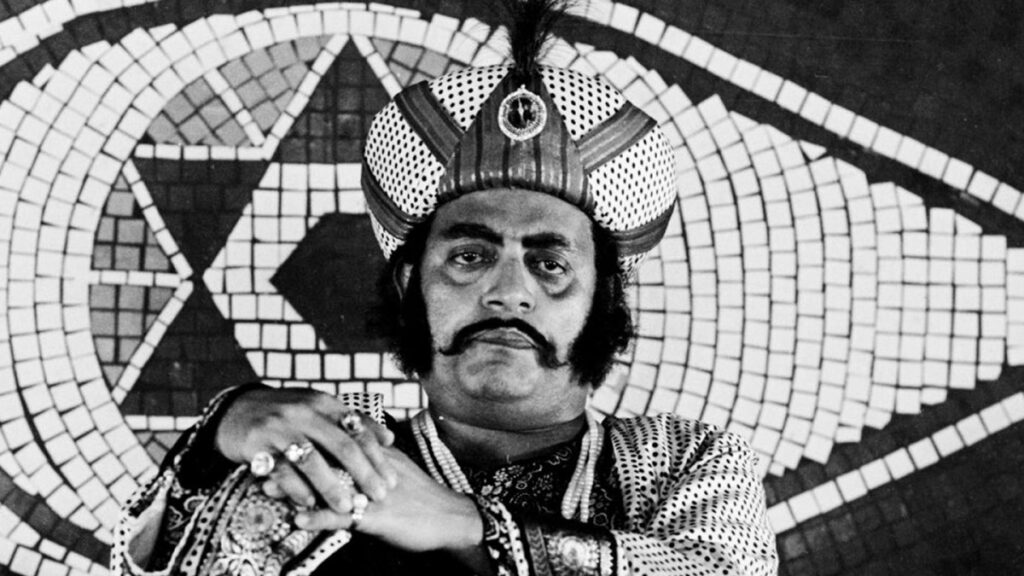
In the annals of political psychology, the phenomenon known as political paranoia assumes a prominent position, showcasing the depths of human mistrust and the capricious nature of our collective psyche. It is characterized by an unwavering and irrational suspicion of political actors, intertwined with a steadfast conviction in clandestine plots and conspiracies orchestrated by these very figures to dismantle the fabric of society. Those ensnared by the clutches of political paranoia often interpret commonplace political occurrences as omens of a grand conspiracy, leading to a corrosive cocktail of scepticism, deep-seated mistrust, and, in extreme cases, actions bereft of reason. While it is true that some apprehensions may indeed be grounded in reality, an excessive dose of suspicion has the potential to distort the very essence of our existence, stifling constructive political discourse in its path.
Perhaps the most salient exemplar of political paranoia that reverberates through the corridors of popular culture is the infamous era of McCarthyism. Spanning the late 1940s to the 1950s, this tumultuous chapter in American history was marred by an unprecedented wave of anti-communist sentiment, its malevolent grip tightening with each passing day. It derives its nomenclature from the indomitable Senator Joseph McCarthy, whose pivotal role in stoking the fires of apprehension cannot be overstated. This fevered period bore witness to the wanton accusation of countless individuals as either communists or sympathisers, often without substantial evidence, igniting a domino effect of investigations, hearings, and an overarching climate of fear and suspicion. The consequences were dire and far-reaching, as scores of innocent citizens were confronted with the spectre of job loss, blacklisting, and reputational ruin.
The term “McCarthyism” has since become a symbolic representation of any campaign or practice that unjustly singles out individuals or groups based on their beliefs or affiliations. A cautionary reminder of the perils of political hysteria and the gradual erosion of cherished civil liberties.
In the ceaseless ebb and flow of human history, political paranoia persists as a sobering testament to the fragility of our political systems and the tenacity of our fears. Its intoxicating allure captivates the most discerning minds, shrouding them in a perpetual state of distrust. Yet, we must not allow the tendrils of paranoia to suffocate the very essence of democratic dialogue, for it is within the crucible of open and inclusive exchanges that the seeds of progress are sown.
In pursuit of an open and inclusive dialogue, which lies at the core of progressive politics. Let me now reflect on my quest to uncover the truth behind Comrade Kutrz, also known as the pervasive political paranoia that afflicts the Tower Hamlets Labour Party.
My Journey in the Heart of Tower Hamlets Labour

“The horror! The horror!”
Joseph Conrad, Heart of Darkness
Now coming back to the Labour Party. It is a political institution shaped by our first-past-the-post electoral system, one is reminded of its enduring nature as a coalition of social democrats and socialists. This coalition, tracing its roots back to the Independent Labour Party and the party’s inception, has prompted the Labour Party to adopt the label of a Democratic Socialist party, embracing the diverse strands within its ranks. As for my personal journey into the Labour Party, it commenced in 1995 when I joined in Bedford. Notably, in 1997, Patrick Hall, an avowed socialist, secured an MP position under Tony Blair’s leadership, openly opposing the Iraq War and the renewal of the Trident nuclear deterrent system.
However, my initial involvement with Tower Hamlets Labour in 2016 led me to a disheartening discovery: a prevailing atmosphere of hostility and deep-seated paranoia towards anyone espousing left of centre politics. The palpable hostility became evident during my first local Labour Party. Subsequently, as I read the vicious social media attacks on Christine Shawcroft, a former NEC member, launched by prominent figures within Tower Hamlets Labour. Viciousness transcended into the realm of assault in a local Labour Party meeting, as witnessed by veteran Trade Unionist, the late Brian Nicholson.

Motivated by a commitment to solidarity, party plurality, and democratic principles, I found myself pitted against the leadership of Tower Hamlets Labour. Thus began the internal struggle, the ‘Forever War’ against the leadership of Tower Hamlets Labour, driven by a quest for greater democracy and inclusivity.
When attempting to convey the challenging situation to friends outside the confines of Tower Hamlets, I found myself drawing upon the metaphor of the Battle of Stalingrad, specifically alluding to the imperviousness of “Pavlov’s House.” Light-hearted jesting ensued during our encounters, as my friends would inquire about my progress, prompting me to retort, “Still standing strong, yet to be captured.”
Yet, fuelled by intellectual curiosity, I embarked on a mission to unravel the underlying causes of the pervasive paranoia and lack of tolerance plaguing Tower Hamlets Labour.
A deep dive into the Paranoid Android of Tower Hamlets Labour: A Narcissism of Small Differences or Something More?
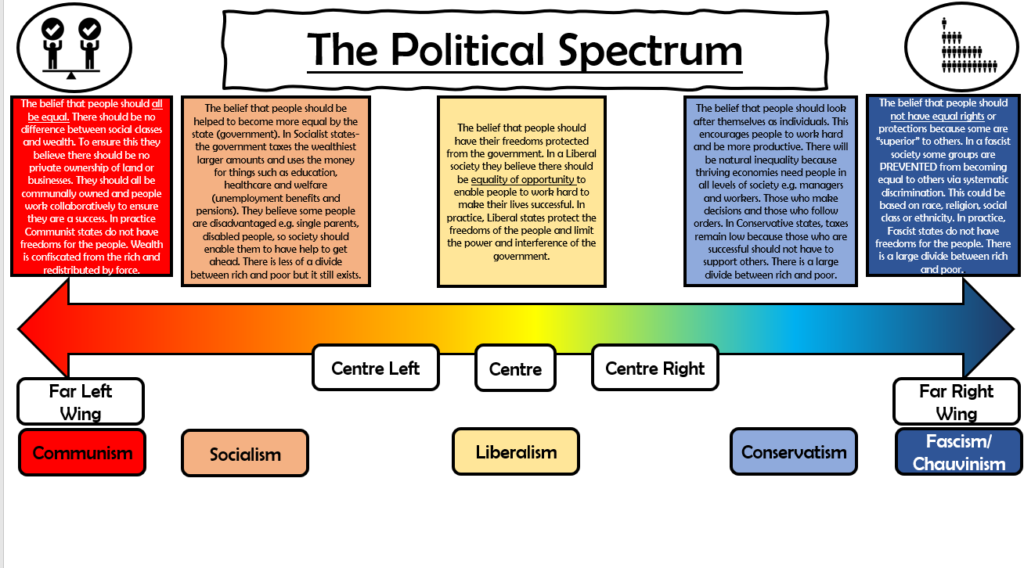
Throughout an extensive and meticulous investigation, I delved into the profound origins of the intense paranoia directed towards anyone espousing left-of-centre politics. My quest led me deep into the labyrinthine history of Tower Hamlets’ Labour Party, where I engaged in illuminating discussions with key figures and painstakingly connected the intricate dots. In my pursuit of understanding, I ventured into neighbouring boroughs, drawing insightful comparisons and conversing with stakeholders from diverse perspectives. Notably, a vital source shedding light on the recent chronicles of Tower Hamlets Labour lies within Judge Mawry’s judicious pronouncement in 2015.
These relentless inquiries, particularly the illuminating contrasts with neighbouring boroughs, brought forth an incontrovertible revelation: the enigma gripping Tower Hamlets Labour transcends the conventional factionalism inherent within the wider Labour Party. It is a unique predicament riddled with complexities of its own.
A revelatory moment arrived during a captivating conversation with a seasoned Labour Councillor from Islington. They offered profound insights into the divergent dynamics at play in Islington, distinct from the convoluted tapestry of Tower Hamlets. There, an unwritten consensus thrives—a collective understanding that any individual ensnared in rent-seeking pursuits is promptly stripped of their mantle of responsibility, effectively consigned to a state of pariah. Such an unwavering commitment to ethical conduct cultivates an environment conducive to politics grounded in substantive discussions of ideas, policies, and a commendable tolerance for the diverse factions that coexist within the Labour Party.
The erudite Councillor further expounded upon Islington’s zero-tolerance approach to rent-seeking activities, which eliminates the fertile ground and incentives for those who operate in bad faith. As a result, all dialogues and debates unfold with a genuine commitment to sincerity, paving the way for reasoned decisions based solely on merit.
A bad faith actor is someone who acts dishonestly and manipulates others for personal gain. They deceive, exploit vulnerabilities, spread false information, and disregard ethical standards. They use manipulative tactics, conceal their true intentions, and can be found in various contexts, including politics, business, law, and online interactions. It’s important to be cautious, verify information, and protect oneself from their actions. In the realm of politics, the more common term is a political opportunist.
In stark contrast, the intricate interplay of traditional Labour Party factionalism and the alleged pervasive nature of rent-seeking practices within Tower Hamlets creates a perilous blend that nurtures extreme political paranoia. This disconcerting phenomenon became starkly apparent in my personal encounters with the Tower Hamlets Labour leadership, wherein the presence of actors driven by ulterior motives was palpable, undermining the foundations of trust and good faith.
I came across this vicious cycle of bad faith actors for rent-seeking purposes perpetuating paranoia of the Tower Hamlets Labour leadership, just before I became a Councillor.
The Case Study of The Tower Hamlets Labour Political Thriller, ‘Puru the Newspaper Seller’.

It all began with an innocent conversation between myself, the Labour candidate for Mile End, and another candidate. We were discussing a book I was reading by the political journalist, Michael Crick, which delved into the history of the area’s connection with the Militant Tendency and their printing press on Cambridge Heath Road. This person expressed interest in the subject, so I innocently shared a PDF copy of the book with them, thinking nothing more of our conversation.
Unbeknownst to me, this individual was burdened with debts and saw an opportunity to gain favour with the Tower Hamlets Labour leadership by fabricating a story. In bad faith, they twisted our conversation to falsely claim that I was somehow affiliated to the Militant Tendency, consistently providing fictitious updates about my supposed activities. Making themselves valuable as a source of information to the leadership, then pivoting that value to angle an allowance-paying position out of the leadership. Thus, the tale of ‘Puru the Newspaper Seller’ was born, reaching absurd heights where my non-existent newspaper-selling endeavours became a topic of discussion in a Tower Hamlets Labour Group Executive meeting.
Considering the empirical evidence at hand, several salient observations come to the fore. Firstly, it is crucial to acknowledge that the Militant Tendency, was once a prominent force in Labour Party political circles. It no longer operates within the Labour Party and has undergone a metamorphosis, reconstituting itself as the Socialist Party.
Secondly, a discerning ear can readily discern that my accent does not betray a Merseyside origin. But rather bespeaks my roots in a distinct home county, infused with the unmistakable cadence of a relaxed cockney demeanour.
Thirdly, and perhaps most strikingly, the veracity of claims suggesting my involvement in the sale of newspapers or magazines unravels under scrutiny. The audacity with which such unfounded assertions were embraced by the leadership is a subject of profound curiosity. Where are the customers that I sold these fictitious newspapers and magazines? Or, as Eminem, sang, “Will the real slim shady please stand up!”
Fourthly, as I publicly stated before. In the past, I was engaged in business transactions which included sovereign states as customers. Such, level of transactions requires a certain level of security clearances in those respective jurisdictions. Hardly, the profile or modus operandi of an active revolutionary communist? Let alone a member of the now defunct, Militant Tendency.

In response to this dubious environment, I adopted a calculated strategy. At the inaugural council meeting, deliberate opposition manifested itself in my voting patterns, a strategic divergence from the aforementioned individual’s stance. Simultaneously, a gradual withdrawal from interactions ensued, as I sought to gauge the leadership’s response to the dissonance between my overtly conveyed intentions, via this individual, and the covert machinations guiding my true intentions. This sly ruse, undertaken with an undercurrent of wry amusement, served as an illuminating sociopolitical experiment, laying bare the intricacies of power dynamics within the inner sanctum.
Ultimately, my tenure as a councillor culminated in a decisive severance of all communication channels due to other issues. However, the cessation of communication proved futile in quelling the propagation of fictitious narratives. Astonishingly, the genesis of these fabrications shifted from the individual in question to a motley crew of actors within the Town Hall. Their persistent peddling of falsehoods uncovered a disconcerting underbelly, revealing deeply entrenched structural fissures within Tower Hamlets Labour. Resulting in a pervasive undercurrent of paranoia permeating the organisation, from local party meetings to decisions in the Town Hall.
Introducing the Feedback Loop of Bad Faith Actors in Tower Hamlets Labour: Feeding the Paranoia

In the intricate tapestry that is Tower Hamlets Labour, the insidious currents of bad faith actor feedback loops find their damning cadence. Like a carefully orchestrated symphony, this process unfolds across three distinct movements, leaving in its wake a trail of electoral misfortune and systemic disillusionment. Ending in the crescendo of the Tower Hamlets Labour we all know, a microcosm of political machinations, lays bare the perils of rent-seeking, the treachery of deceit, and the toxic brew of paranoia that permeates its very essence.
In the first movement, the inception, an unpopular decision takes root within the town hall chambers. At this delicate juncture, the scheming players within Tower Hamlets Labour, propelled by their self-serving agendas, craft a distorted narrative to deceive the unsuspecting leadership. Cloaked in the guise of adulation, they manipulate their true assessment, offering effusive praise for ill-fated choices. One striking example resides in the case of ‘Liveable Streets’, where these actors, formerly enamoured with their cars, deftly adopt cycling as a newfound passion, capturing photographic evidence to curry favour with the leadership. Genuine concerns voiced by conscientious Labour councillors are summarily dismissed as inconsequential.

The second movement, the pandemonium, sees the dissent of residents and stakeholders reach a cacophony. Seizing the opportunity, the malevolent actors swiftly ascend to the corridors of power, driven solely by their insatiable desire for personal gain. Their practised artistry lies in the ability to peddle promises, leveraging their illusory standing within Tower Hamlets to sell policies as panaceas that appease the disgruntled masses. A deft performance ensues, as they cater to the whims of the crowd, passionately critiquing the very decisions they ostensibly championed in the Town Hall, all the while vowing to champion the cause of the stakeholders. Thus, the tumultuous uproar subsides, leaving the actors to revel in their contrived triumphs. A false dawn, as they have not successfully sold the policy, instead added to the discontentment. With a lull in protests secured through false promises, they have meticulously burnished their reputations for future promotions or bolstered council allowances.
A poignant anecdote emerges from the saga of the Community Language Service. In a public gathering attended by Mayor John Biggs and influential stakeholders, a Labour councillor takes centre stage. Commencing his address in English with a disingenuous declaration of friendship towards the mayor. He swiftly transitions into a venomous diatribe in Bangla, brazenly attacking the Tower Hamlets Labour policy and the individual who remains blissfully unaware of the public mockery aimed at him.
In the third movement, the unravelling, the disillusionment of residents and stakeholders becomes palpable. The tempestuous storm, amplified by media scrutiny, serves the self-serving motives of the bad-faith actors. Professing unwavering loyalty to the leadership, these cunning manipulators attribute the resolution of issues to their own efforts, only to cast blame on external agitators who allegedly undermined the success. Exploiting the leadership’s pervasive paranoia, they deftly weave intricate webs of conspiracy, fortifying their positions of influence.
Within the prevailing climate of paranoia, the agitators emerge from various quarters. Some infiltrate from within the ranks of the Labour Party itself, embodied by the likes of Puru Miah, Helal Abbas and any number of retired Bangladeshi political figures. While others lurk outside its boundaries, exemplified by Lutfur Rahman and imaginary Aspire fifth columnists nestled within Labour’s folds. Broader international conspiracies, entwined with narratives of Islamist plots or International Marxists, provide a backdrop to these intricate machinations. A sci-fi plot line, with the Cold War and the War on Terror combined.
Among the myriad external imaginary intrigues feeding Tower Hamlets Labour’s paranoia, one particular case stands out—the Whitechapel Bell Foundry campaign. Here, heritage groups, buoyed by the endorsement of Conservative Secretary of State Robert Jenrick. Allegedly colluding with the East London Mosque. These groups are accused of clandestinely working towards a mosque expansion, under the guise of making church bells.
In certain cases, the bad-faith actors fall victim to their own delusions. Consider the contentious case of Bethnal Green West, where the ‘Liveable Streets’ scheme faced vehement opposition from local BAME residents, including the congregants of Hackney Road Mosque. In a calculated display of solidarity, the local councillor descended upon the mosque, passionately urging residents to rally against the scheme while purporting unwavering support. However, the scheme persisted despite their opposition, leading residents to uncover a damning video on social media. The footage revealed the same councillor expressing resolute endorsement of the very scheme he purportedly opposed.
Fuelled by this betrayal, residents mobilised within the Labour Party, successfully orchestrating the deselection of this duplicitous figure. Astonishingly, the deposed councillor remains obstinate and unrepentant, steadfastly denying the undeniable link between his actions and the subsequent consequences, instead attributing his downfall to a wider conspiracy involving the shadowy external figures operating within Tower Hamlets Labour.

In the intricate tapestry of political dynamics, the interplay between chronic rent-seeking, disingenuous actors, and an apprehensive leadership in Tower Hamlets Labour manifests as a toxic elixir that inevitably ushers in electoral and multifaceted calamities. This revelation transcends the confines of Tower Hamlets, resonating as a universal truth that permeates our collective understanding. A good example can be found in recent Indian political history.
Case Study of The Indian Emergency: Political Paranoia Never Ends Well

“চিত্ত যেথা ভয়শূন্য, উচ্চ যেথা শির, জ্ঞান যেথা মুক্ত”“
“Where the mind is without fear and the head is held high;
Chitto Jetha Bhayshunyo (“Where the mind is without fear”) – Rabindranath Tagore
Where knowledge is free”
The Indian Emergency, spanning from 1975 to 1977, remains an indelible mark on the country’s democratic fabric. Prime Minister Indira Gandhi’s declaration of a state of emergency during this period suspended civil liberties and bestowed the government with sweeping powers to stifle dissent, control media narratives, and detain individuals without due process. However, this dark chapter in India’s political history eventually met its demise in 1977, succumbing to widespread protests and a change in government brought about by democratic elections.
To comprehend the roots of the Emergency, one must delve into the deep-seated paranoia that gripped Indira Gandhi as she assumed absolute control over both the ruling party and the bureaucratic machinery. In an unabated quest for centralized authority, she magnetized an assortment of malevolent actors and opportunistic rent-seekers into her administration, ultimately fostering an environment where any voice of opposition was perceived as an existential threat. This apprehension was further amplified by an ingrained culture of sycophancy that enveloped the corridors of power.
The cinematic realm, often a reservoir of socio-political commentary, took on the daunting task of dissecting the ramifications of the Indian Emergency. One such endeavour was undertaken by the eminent Bengali filmmaker Satyajit Ray, whose directorial prowess delivered a dystopian children’s film titled “The Kingdom of Diamonds.” Within its narrative, Ray artfully elucidates the theme of political paranoia, deftly weaving it into the fabric of the Emergency through his cinematic allegory.
In Ray’s cinematic allegory, the King, finally emerges from the clutches of his paranoid delusions, leading to a resounding dénouement. This political fable serves as a poignant reminder of the perils of power abuse, highlighting its capacity to oppress the defenceless and the innocent. The symbolic demolition of the King’s statue, an act representing the triumph of the human spirit and the collective will against totalitarianism, resonated profoundly with viewers.
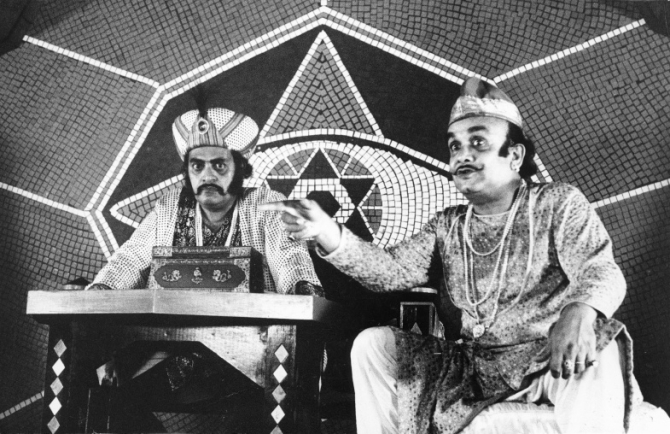
Drawing a parallel to contemporary political landscapes, we find ourselves in the realm of Tower Hamlets Labour, where leadership succumbed to an unremitting state of paranoia, perpetuated by the dissemination of misinformation orchestrated by ill-intentioned actors. Disregarding the glaring deficit of 11,000 votes and nurturing illusions of an impending landslide victory, their aspirations crumbled irrevocably on election day, plunging them into the depths of a resounding defeat that echoed far and wide.
“We live as we dream – alone. While the dream disappears, the life continues painfully.”
Joseph Conrad, Heart of Darkness
This modern-day political allegory, reminiscent of Ray’s opus, expounds upon the oppressive nature of power when wielded in a paranoid manner. The symbolic dismantling of the statue metaphorically embodies the indomitable spirit of humanity and the latent potency of collective determination against the spectre of dysfunctional politics. As we navigate the intricate web of politics, it serves as a timely reminder of the consequences of power mismanagement and the enduring strength of a united will amongst the multi-racial working-class communities of the East End.
“পিতঃ;ভারতেরে সেই স্বর্গে করো জাগরিত৷”
“Into that heaven of freedom, my Father, let my country awake.”
Chitto Jetha Bhayshunyo (“Where the mind is without fear”) – Rabindranath Tagore
But there is a cost.
The Case Study of Ahmed Chalabi and the US Invasion of Iraq: Bad Faith Actors, Rent Seekers & Political Paranoia Costs Lives

The resonance between the downfall of Tower Hamlets Labour and the ill-fated US invasion of Iraq reverberates with an uncanny timbre. Within the Iraqi narrative, a captivating figure emerges from the tapestry: Ahmed Chalabi, a regular customer of a local Whitechapel restaurant. Chalabi, a former Banker, convicted fraudster turned fugitive, sought refuge in the embrace of London. His ill-gotten riches tucked away from the prying eyes of authority. A maestro of perfidy, he epitomized the archetype of a deceitful protagonist.
Unsatisfied with the spoils reaped from his audacious bank heist in Jordan, Chalabi ventured into the labyrinthine arena of political opportunism and rent seeking. The genesis of the Iraqi National Congress (INC), an organization purporting to be the vox populi of all Iraqis, mirrored the machinations of certain Tower Hamlets Labour politicians and their intricate web of “Alphabet Associations.” Yet, it was Chalabi’s dalliance with the formidable Washington lobbying firm, BKSH & Associates, that thrust him into the hallowed halls of power, expertly capitalizing on the palpable paranoia stemming from the Bush Administration’s “War on Terror.”
With guile and artifice, Chalabi assumed a pivotal role in furnishing the Bush Administration’s intelligence apparatus with damning evidence implicating Iraqi President Saddam Hussein. Reports of weapons of mass destruction and alleged ties to the nefarious al-Qaeda organisation flowed ceaselessly from Chalabi’s wellspring of deception. After the invasion, with no weapons of mass destruction found, the relentless pursuit of truth unravelled a stark reality: these assertions, woven by Chalabi’s skilled hand, were naught but falsehoods, casting him as a master fabricator.
While Chalabi and his coterie revelled in personal gains resulting from the invasion, the socialised costs borne by society were of cataclysmic proportions. The disheartening estimates published in The Lancet, the British Medical Journal, paint a grim tableau: between March 18, 2003, and June 2006, an alarming 654,965 additional Iraqi lives perished, surpassing all expectations based on pre-invasion mortality rates. Within this harrowing toll, an estimated 601,027 lives succumbed to violence.
Coming back today, what now for Tower Hamlets Labour? Here are my suggestions.
So you still want to fix Tower Hamlets Labour?

In analysing the predicament of the Tower Hamlets Labour Party, one is confronted with a deeply entrenched culture of indifference and suspicion. This lamentable state of affairs is exacerbated by a pyramid-style political structure that repels ardent adherents of the Labour Party’s principles while enticing those with a penchant for political opportunism. The resultant toxic amalgamation diverts the party’s focus from its collective mission of securing electoral triumphs through the cultivation of public trust, instead redirecting attention towards individualistic pursuits.
In analysing the predicament of the Tower Hamlets Labour Party, one is confronted with a deeply entrenched culture of indifference and suspicion. This lamentable state of affairs is exacerbated by a pyramid-style political structure that repels ardent adherents of the Labour Party’s principles while enticing those with a penchant for political opportunism. The resultant toxic amalgamation diverts the party’s focus from its collective mission of securing electoral triumphs through the cultivation of public trust, instead redirecting attention towards individualistic pursuits.
A compelling exemplification of the aforementioned analysis lies in the abortive endeavours of Tower Hamlets Labour councillors to admit Ohid Ahmed (#Ohidgate) into the party’s ranks. Allegedly, this manoeuvre was primarily motivated by the desire to employ him as a bargaining chip in the quest for control over committees during the council’s Annual General Meeting, all in the name of securing supplementary allowances. Thankfully, such Machiavellian machinations were met with opposition from party members, who recognised the potential detriment to the party’s reputation both locally and nationally, thereby imperilling its electoral prospects. A sentiment that resonated with a local Labour Member of Parliament, no less.
To rectify their electoral readiness for forthcoming local elections and to successfully re-establish trust among voters, Tower Hamlets Labour must contemplate a series of uncomplicated measures:
Get Organised!: Hire organisers to rebuild the local party from the ground up.

The Labour Party, on a national scale, finds solace in its affiliation with prominent trade unions. For the past decade, the United Kingdom’s Trade Unions have been diligently erecting organizing units within their respective domains. A striking case in point is the commendable efforts of the GMB union’s organising unit, which has taken up the arduous task of mobilising workers ensnared in the clutches of the corporate behemoth known as Amazon.
Within this intricate tapestry, local Labour MPs, alongside the CLPs, wield the power to beseech these unions to dispatch organizers on secondment. Armed with a tried-and-tested methodology, these organizers commence the arduous process of resuscitating an active membership base. In doing so, they deftly identify the “natural leaders” who possess the potential to serve as beacons of change within the fold. And eventually potential candidates.
Around these identified individuals, a framework begins to emerge, one that extends its tendrils beyond the confines of the party itself, through resolute campaigns that seek to rekindle the trust of the local electorate.
Structured Tests: Put in standard employment checks to vet proposed Labour candidates
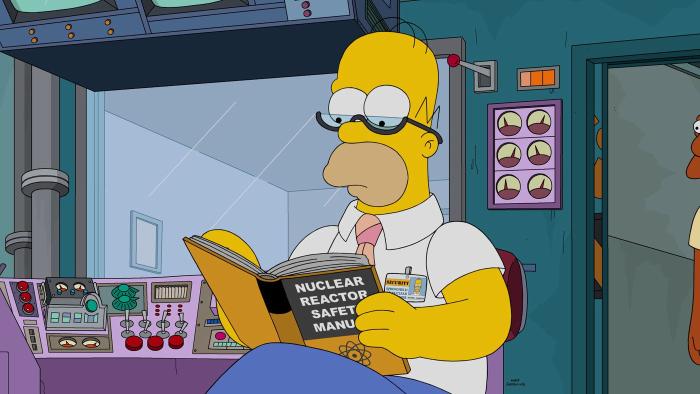
Yet, in order to salvage the tarnished reputation of the Tower Hamlets Labour Party, and to amass a formidable reservoir of candidates, stringent employment checks must be instituted. These checks should entail a comprehensive assessment of employment history, DBS safeguarding criminal record checks, and scrutiny of immigration status. Furthermore, in a manner akin to employment practices, rudimentary tests of literacy and numeracy ought to be conducted.
In undertaking such measures, not only does the party shield its reputation from further scandalous imbroglios, but it also ensures the cultivation of a cohort of candidates brimming with the utmost competence.
Moving Forward with a Clear Message: Clear Break and Clear Messaging

To regain the trust of voters, Tower Hamlets Labour must embark upon a decisive break from its tumultuous past, much akin to the transition (rightly or wrongly) trumpeted by Tony Blair in the 1990s. By skilfully crafting a coherent and unambiguous messaging strategy, the party can transcend the shadow cast by the electorally discredited John Biggs administration.
For actions, undeniably, speak with a resonance that mere words can only aspire to match. Consequently, the forthcoming pool of candidates for the 2026 electoral showdown must steadfastly reject any association with the John Biggs team, whose reign from 2018 to 2022 elicited an overwhelming electoral repudiation. This resolute stance draws an indelible line in the sand, while simultaneously broadcasting a crystal-clear message to the discerning electorate.
For actions, undeniably, speak with a resonance that mere words can only aspire to match. Consequently, the forthcoming pool of candidates for the 2026 electoral showdown must steadfastly reject any association with the John Biggs team, whose reign from 2018 to 2022 elicited an overwhelming electoral repudiation. This resolute stance draws an indelible line in the sand, while simultaneously broadcasting a crystal-clear message to the discerning electorate.
As a card-carrying member of the Labour Party, the agonising spectacle of Council chamber meetings has proved a formidable test of resilience. The sight of Labour councillors staunchly defending their record under the aegis of the John Biggs administration, both explicitly and implicitly, is enough to induce a sense of profound disillusionment. And to compound matters, witnessing the Aspire party nimbly repel these attacks by unfurling their own records, offers an added layer of discomfiture. This dynamic, sadly, is not confined to the hallowed halls of the Council chamber; rather, it permeates the very fabric of the local political landscape. In the public sphere, members of the administration, have been subjected to vociferous castigation and that is by Labour Party members.
A definitive break, one that unequivocally severs ties with the John Biggs team, provides the local party with the impetus to redirect the discourse towards a more propitious trajectory. As things stand, the party finds itself ensnared in a quagmire of relentless defence, futilely attempting to justify a record that the electorate, in an overwhelming landslide, has unequivocally disavowed.
East End Politics Iron Man Competition: So You Still Want to be a Labour Councillor in Tower Hamlets?

An Iron Man embodies an extraordinary athletic prowess, characterized by their unparalleled physical stamina. This indomitable endurance is often measured by their ability to partake in an uninterrupted succession of games, sometimes spanning an entire career.
In light of the prevailing condition of Tower Hamlets Labour, one must possess the unyielding fortitude of an Iron Man, both in physical and mental capacities. Such resiliency becomes imperative for individuals seeking invaluable advice and recommendations on navigating the treacherous and toxic realm of politics within this jurisdiction.
Nevertheless, for those who aspire to effectuate positive change in their personal lives, as well as for the betterment of their communities and neighbours. Without subjecting themselves to the corrosive atmosphere that permeates Tower Hamlets Labour, an alternative path presents itself. Read on.
Here is the alternative: Preferring not to engage with Tower Hamlets Labour

“I would prefer not to” is a phrase famously associated with the character Bartleby in Herman Melville’s novella, “Bartleby, the Scrivener.” Bartleby, a copyist, frequently uses this phrase to respond to requests or commands. It conveys a polite refusal or reluctance to comply with a request, indicating a personal preference to abstain from a particular action or situation.
The phrase can be interpreted as a form of passive resistance to societal norms and authority, reflecting an individual’s refusal to conform or participate in unfulfilling or morally objectionable activities. In the story, Bartleby’s repetitive use of this phrase challenges the assumptions of his workplace and environment, embodying a quiet rebellion through non-action. From a philosophical perspective, it raises questions about individual autonomy, free will, social constraints, and the pursuit of personal meaning in an indifferent world.
Building Structures outside of Tower Hamlets Labour

Following my election victory, I was immediately struck by the noxious atmosphere emanating from the leadership of Tower Hamlets Labour, its toxic tendrils snaking through every organisational crevice. In response, a steadfast resolve compelled me to construct alternative frameworks outside the confines of the Tower Hamlets Labour Party. Allowing me to keep an election promise to the residents of Mile End to be a grassroots representative at the Town Hall.
These frameworks, referred to as “structures” in the realm of organising, embody a complex interweaving of relationships, self-sustaining and organically expanding, united by a shared purpose. Analogous to a trade union organiser who deftly weaves a web of connections within a workplace, these structures possess the capacity to thrive and proliferate. Once these interconnected networks reach a critical mass, their collective energy can be harnessed and mobilised for specific campaigns, such as negotiating a Trade Union recognition agreement with an employer.
Returning to the local landscape of Tower Hamlets, my tenure as a councillor spanning four years has witnessed the gradual construction of these structures. Time and again, they have proven invaluable in mobilizing for various campaigns, all driven by a common thread: the pursuit of a larger vision to mend the shattered fabric of our politics in the East End. Notably, I deliberately chose to sidestep involvement with Tower Hamlets Labour, eschewing its pervasive culture of rent-seeking. By doing so, I sought to shield participants from its debilitating influence and cultivate a more principled approach to collective action.
Recent developments have brought forth a glimmer of hope, as I have successfully secured preliminary seed funding to sustain and nurture these nascent structures. In light of this propitious turn of events, allow me to present a comprehensive plan for their enduring growth and consolidation. Within this unfolding narrative, a vista of opportunity awaits, beckoning us towards the realisation of our collective aspirations. Fixing the broken politics of the East End.
Call to Action: Young & Want to Change Things but Tower Hamlets Politics Too Toxic
Attention everyone! Let me share the plan with you. Recently, there was a heated exchange on Twitter involving an Executive Member of the Tower Hamlets Labour Group of Councillors, who resorted to using Islamophobic tropes. After consulting various stakeholders, we have reached a consensus that Tower Hamlets Labour, under its current de facto leadership, does not provide a safe environment.
Therefore, after extensive discussions. I have decided to establish a safe space specifically for second and third-generation members of the Muslim community in the East End. This space will serve as a platform for exploring and learning about organizing campaigns related to social justice issues. It is important to note that this space is not exclusively for Muslims, but is open to members of migrant communities and the embedded working-class communities that constitute the East End. The aim is to create an inclusive environment where individuals can freely express their identities and backgrounds when addressing social justice matters, without the fear of being silenced or criticised.
I am pleased to announce that funding has been secured from the private sector. In addition to organising activities, we will provide support in understanding modern communication strategies, techniques, data analysis, and public speaking through the guidance of a corporate speaking coach. Due to the stringent requirements set by the funders, we will be conducting interviews. If you are successful, and upon agreeing to our charter of values, you will have the opportunity to participate in a comprehensive support program.
To give you an idea of the topics that will be covered, I have compiled a list of suggested reading materials, along with a podcast. If you are interested in obtaining more information, please don’t hesitate to email me at [email protected].
“Having served for nearly half a century in the House of Commons, I now want more time to devote to politics and more freedom to do so.”
Tony Benn – After announcing he will not be seeking reelection.
Conclusion to the 4 Part Series: Counting the Costs?
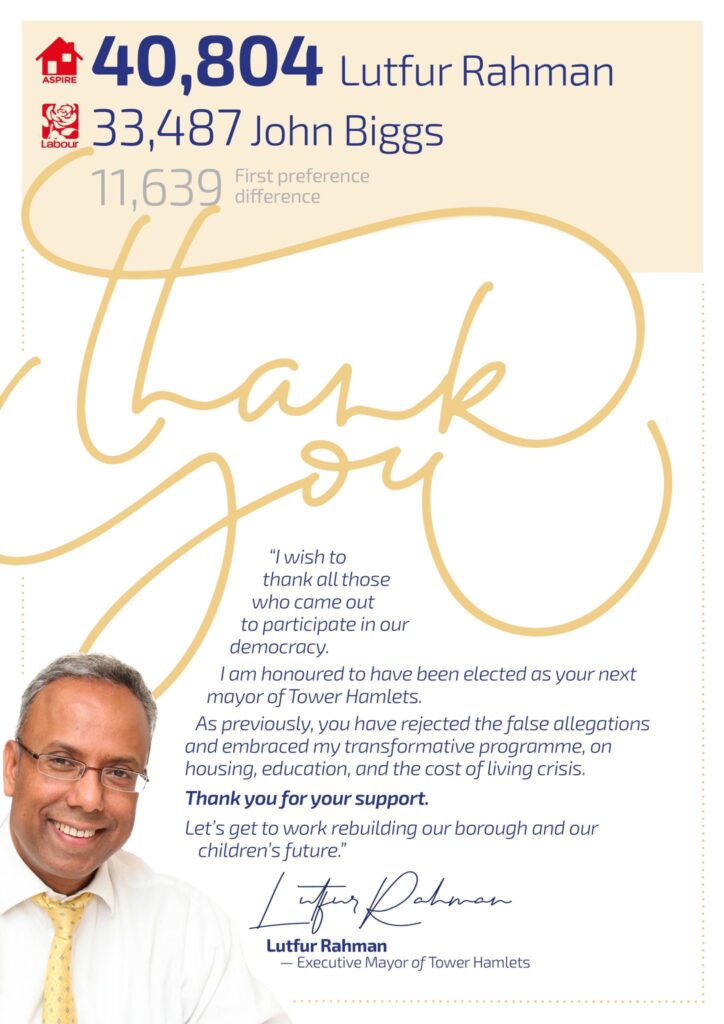
“Politics is a matter of choices, and a man doesn’t set up the choices himself. And there is always a price to make a choice. You know that. You’ve made a choice, and you know how much it cost you. There is always a price.”
Robert Penn Warren
The culmination of the four-part opus, meticulously examining the demise of Tower Hamlets Labour, marks the dénouement of an extraordinary narrative. Cast your memory back to 2018, when the party held an iron grip over Tower Hamlets Council, reigning supreme with a mayoralty and an impressive 41 out of 44 council seats. Fast-forward to 2022 and the present day, and we witness the shattering defeat of the mayoralty and the loss of their majority in the council chamber. Truly, if a week is an eternity in politics, then these four years, upon retrospective contemplation, resemble an epoch.
A perplexing silence pervades the annals of the legacy media regarding the political earthquake that reverberated through the East End, exacerbated by the resolute silence from the UK Labour Party. Hence, one year after this cataclysmic downfall, I hold firm in my conviction that this is a consequential story that warrants telling.
I must confess that crafting this series has imbued me with an undeniable sense of enjoyment. Navigating through my meticulously kept notes and recalling the whimsical feedback received from friends and well-wishers evokes a satisfying resonance. However, this pleasure is tinged with a profound sadness as I reflect upon the toll exacted by the dysfunctional politics that permeated Tower Hamlets Labour, inflicting immeasurable damage even upon lives. Indeed, it is a stark reminder that no crime is truly victimless.
Returning our gaze to Tower Hamlets Labour, we find ourselves grappling with the amorphous contours of the socialised costs entangled within the fabric of Tower Hamlets Labour’s dysfunctional politics. Socialised costs both to the Labour Party and wider society that could have been avoided. Instead of riling residents up with a “Let them eat cakes”, attitude.
Marie Antoinette’s Attitude of Tower Hamlets Labour: Let them speak English or Let them ride bikes!

Examining two notable instances serves to shed light on this Marie Antoinette attitude of Tower Hamlets Labour. Firstly, the contentious battle over the Community Language Service offers a compelling case study. With a paltry expense of £250,000, this invaluable service could have been sustained. A prudent approach would have involved devising a medium-term cost-saving strategy, accompanied by revenue-generating measures, ultimately rendering the service cost-neutral.
Regrettably, a host of unscrupulous actors within the Town Hall propagated a climate of mistrust, actively advocating for the service’s dismantlement. Such individuals, driven by ulterior motives, fostered an atmosphere of baseless suspicion, wherein the spectre of ‘they are all Lutfur Rahmans’ haunted discussions. Tragically, this provoked an unyielding response from the Tower Hamlets Labour leadership, thereby polarising the debate and resulting in severe reputational damage for the party within migrant communities. Most lamentably, this unfortunate turn of events deprived 1,500 children of access to a poverty reduction scheme—an indescribable blow in a borough plagued by one of the nation’s highest child poverty rates.
Secondly, we turn our attention to the ‘Liveable Streets’ initiative, which unfolded against a backdrop of significant opposition from local residents. Interestingly, these dissenting voices initially sought compromise, suggesting the replacement of physical barriers with cameras—a testament to their willingness to find common ground. Modest adjustments in design could have sufficed to garner residents’ support.
Alas, the pernicious influence of certain elements within the Town Hall became unmistakable once again. Propagating an environment of duplicity, these actors urged the leadership to adopt an uncompromising stance, readily dismissing dissenters as mere adherents of the UK Independence Party (UKIP). Furthermore, they disseminated falsehoods concerning the scheme’s appeal to BAME (Black, Asian, and Minority Ethnic) residents, in stark contrast to reality. The ensuing rhetoric of divisiveness succeeded in polarizing the debate, rendering lifelong Labour voters bereft of alternatives but to cast their votes for Aspire, driven by sheer desperation.
The dysfunctionality of Tower Hamlets Labour’s costs to UK Labour is quantifiable in terms of seats lost and the 11,000 vote deficit in votes. A polarised borough, with sections of the migrant, Muslim and working-class communities viewing the Tower Hamlets Labour Party and its current leadership as the enemy. The cost to society, unlike in Iraq, is yet to be quantified. While the precise quantification of these costs remains elusive, a tentative estimation beckons us forward.
Whither Tower Hamlets Labour: An End to an Ancien Régime?

Journeying along the Central Line towards the eastern reaches of London, alight at Mile End station. One finds oneself on a path that traverses the vibrant tapestry of urban existence. In this particular expedition, we set our sights on Burdett Road, an artery pulsating with life and laden with the weight of its own contradictions. For approximately twenty minutes, the weary traveller treads the well-trodden path until reaching the Burdett Estate—a sprawling social housing development that harbours within its walls a staggering 800 households. Alas, this enclave of communal living is plagued by an insidious affliction: chronic dampness and mould infestations that pervade roughly one-third of the properties. The consequences are dire, with a multitude of children suffering from eczema and respiratory ailments as a result.
Yet, as one proceeds on this pilgrimage, one cannot ignore the shadows that cast a pall over the surroundings. It is a melancholic landscape, marred by a history of violence that has seeped into the very fabric of existence. Until recently, this vicinity witnessed a sombre statistic: an average of one life lost each year due to knife attacks, primarily affecting the young. The repercussions of this chronic violence have reverberated through communities, households, and individuals, serving as a poignant reminder of the rampant rent-seeking behaviour that has come to define the political landscape in the Tower Hamlets Labour stronghold.
Alternatively, one may choose a different path, embarking upon an underground odyssey aboard the Central Line, emerging at either the Mile End or Bethnal Green stations, only to alight at Fairlop or Hainault tube stations. From there, the weary traveller walks along Forest or New Road for approximately fifteen minutes, before taking a turn onto Elmridge Road. This meandering route eventually leads to a local sanctum— an East London cemetery, aptly named the Gardens of Peace.
Within the confines of this sacred burial ground, rows upon rows of graves stretch out as far as the eye can see, bearing silent witness to the tumultuous times that have befallen the people of the East End. Including the trenches dug, marking the ravages wrought by the Covid-19 pandemic.

Some of these resting places stand as stark reminders of the dysfunctional politics that have persistently plagued the Tower Hamlets Labour Party. To truly comprehend the events that unfolded in May 2022, one must cast a discerning gaze upon these graves. While discussions surrounding the defeat of Tower Hamlets Labour often revolve around immediate circumstances, it is imperative not to overlook the years of neglect and suffering that led to this pivotal moment. In the words of Mark Twain:
“THERE were two “Reigns of Terror,” if we would but remember it and consider it; the one wrought murder in hot passion, the other in heartless cold blood; the one lasted mere months, the other had lasted a thousand years; the one inflicted death upon ten thousand persons, the other upon a hundred millions; but our shudders are all for the “horrors” of the minor Terror, the momentary Terror, so to speak; whereas, what is the horror of swift death by the axe, compared with lifelong death from hunger, cold, insult, cruelty, and heart-break? What is swift death by lightning compared with death by slow fire at the stake? A city cemetery could contain the coffins filled by that brief Terror which we have all been so diligently taught to shiver at and mourn over; but all France could hardly contain the coffins filled by that older and real Terror—that unspeakably bitter and awful Terror which none of us has been taught to see in its vastness or pity as it deserves.”
Mark Twain, A Connecticut Yankee in King Arthur’s Court
Such matters have become an unspeakable topic. It remains outside the purview of the archetypes that dominate the superficial conversations about Tower Hamlets. Discussions echo through the corridors of Canary Wharf’s lofty skyscrapers, the various cheese and wine soirées dotting the landscape in and around Victoria Park, or even the vibrant gyms of Stoke Newington. These archetypes persistently fail to acknowledge the plight of working-class communities, particularly the diverse array of individuals who call Tower Hamlets their home.
Instead of relying on a chosen saviour hailing from esteemed educational institutions, such as Oxbridge or the Russell Group of Universities. It was ordinary men and women—many of whom were lifelong supporters of the Labour Party—who rose up and dismantled a suffocating regime, held hostage by its own paranoia and surrounded by political opportunists.
It is a tale that remains shrouded in silence, destined to be consigned to the annals of untold history. Therefore, it is with a sense of profound privilege and utmost reverence that I undertake the task of recounting this narrative.
“Where the world has not been broken up into fragments by narrow domestic walls;
Chitto Jetha Bhayshunyo (“Where the mind is without fear”) – Rabindranath Tagore
Where words come out from the depth of truth;”
Further Reading on Political Cultures
Visual Essay on Apathetic Political Culture – Shatranj Ke Khilari (The Chess Players) by Satyajit Ray, 1977
The Director, Martin Scorsese, puts ‘The Chess Players’ on his list of 40 films to watch. According to Martin Scorsese, “This film deals with a moment of incredible change in Indian history and is told from a comical view that is a hallmark of Ray’s work. Watching it again, I realize this is what it must really feel like to live through a moment of historic change. It feels this big and tragic at the same time.”
Summary
The film intertwines two narratives: the historical drama of the Nawab of Awadh, Wajid Ali Shah, who is overthrown by the British, and the story of two noblemen obsessed with playing chess. Wajid Ali Shah, a poet and artist, is unable to resist the British demand for his throne. Meanwhile, the two noblemen, Mirza Sajjad Ali and Mir Roshan Ali, neglect their wives and escape to a village to play chess, ignoring the takeover of their kingdom. The film highlights the self-centeredness and cowardice of India’s ruling classes, which facilitated the British annexation of Awadh. The character of Captain Weston, a British officer with a love for Urdu poetry, adds to the cultural fusion portrayed. In the end, Mirza forgives Mir for shooting at him, and they both acknowledge their need to hide their faces in shame.
Visual Essay on Political Paranoia – Hirok Desher Raja (The Kingdom of Diamonds) by Satyajit Ray, 1980
Summary
In the sequel, Goopy Gyne and Bagha Byne, the magical musical duo, are invited to perform at the court of the tyrant King of Hirak. Unaware of his cruel rule, they meet Udayan Pandit, who reveals the king’s true nature. Impressed by their powers, Udayan plans to use them to overthrow the king. Goopy and Bagha entertain the king while Udayan plants a note for them. They rob the king’s treasury using their magical music and befriend the scientist responsible for brainwashing. They confront the king in the Jantarmantar and magically transform him and his ministers. The king reforms, dismantles his own statue, and the kingdom returns to normal. Goopy, Bagha, and Udayan become celebrated heroes, bringing positive change through music and friendship.
Visual Essays on the Culture of Corruption – The Calcutta Trilogy by Satyajit Rai
Three films by Satyajit Ray exploring the culture of corruption and its consequences:
- Pratidwandi (The Adversary) (1970)
- Seemabaddha (Company Limited) (1971)
- Jana Aranya (The Middleman) (1976)
Pratidwandi (The Adversary) (1970)
The film is shot in the style of the French film Director, Jean Luc Goddard. In 2012, filmmaker Ashim Ahluwalia included the film in his personal top ten, writing: “Pratidwandi sees Ray drop his early style for a gritty hand-held Godardian romp through ’70s Calcutta. Incredible.”
Vincent Canby of The New York Times gave it 4.5 stars out of 5, calling it a “particularly moving comedy” in which the protagonist “seethes with rage about social injustices, about economic corruption, but he is powerless to express it.”
James Travers gave the film a perfect score, noting “a significant stylistic shift from Ray’s previous films, so much so that it may have shocked and surprised contemporary audiences who had grown accustomed to his poetic flavour of neorealism during the previous decade.” He comments that the film’s cinéma vérité style “suits its subject perfectly” and calls it an “[un]comfortable film to watch” due to its “austerity and bleakness that distance the spectator from the subject and, unusually for Ray, poetic irony does not soften its harshness.
Summary
“Siddhartha” is a film that follows the protagonist, Siddhartha, who is forced to abandon his medical studies after his father’s death. He struggles to find employment and faces a disappointing job interview when he expresses admiration for the courage of the Vietnamese people instead of citing the moon landing as a significant world event. Siddhartha later encounters the Communist party and a potential job opportunity, but his lack of interest leads him to a cinema. In the cinema, a bomb explodes, and Siddhartha breaks his watch in the chaos. He visits a watchmaker but cannot afford the repairs.
Throughout the film, Siddhartha experiences various flashbacks and dreams, including one involving a beautiful woman. His friendship with Keya, a simple girl, remains a source of sanity amidst his disintegrating relationships and constant wandering in Calcutta. Unable to make commitments due to their circumstances, Siddhartha leaves the city for a modest job in a small town, where he writes a letter to Keya expressing his fondness for their relationship. The film ends with Siddhartha hearing the call of a bird from his childhood and sombre funeral chants, symbolizing the end of his aspirations in Calcutta. The final scene echoes the opening scene, depicting Siddhartha’s father’s death.
Seemabaddha (Company Limited) (1971)
The films deal with the rapid modernization of Calcutta, rising corporate culture and greed, and the futility of the rat race. The film won the FIPRESCI (International Federation of Film Critics) Award at the 33rd Venice International Film Festival, and the National Film Award for Best Feature Film in 1971.
Summary
A film about an ambitious sales manager named Shyamal, working for a fan manufacturing company in Calcutta. He aspires to become the company director and is married to Dolan. When his sister-in-law, Tutul, visits, she admires Shyamal’s lifestyle but secretly envies her sister’s marriage to him.
Shyamal faces a crisis when he discovers a shipment of defective fans meant for export. To avoid blame, he collaborates with the labour officer to provoke a strike at the factory, causing a false riot and a lock-out. The delay allows the company to bring in strikebreakers to fix the fans. Shyamal is promoted for his handling of the situation, but Tutul and he himself view him differently. Despite his success, he feels morally compromised and lonely at the top.
Jana Aranya (The Middleman) (1976)
The film is generally considered to be one of the darker and more cynical ones in Ray’s filmography, even by Ray himself. Jonathan Rosenbaum of The Chicago Reader considers it to have “the best performances of any Ray film I’ve seen and a milieu that may remind you of both Billy Wilder’s The Apartment and John Cassavetes’s Faces.”
Summary
The film portrays the economic struggles faced by educated, middle-class youth in 1970s India. The central protagonist, Somnath, has been unsuccessful in finding a job despite his education. One day, he meets Bishuda after slipping on a banana peel and shares his frustrations. Bishuda advises him to start his own business, which leads Somnath to become a self-employed salesman. However, he becomes involved in unethical practices that contradict his upbringing.
Somnath’s friend, Sukumar, also unable to secure a job, becomes a taxi driver. In an attempt to secure a large order, Somnath is coerced into providing a prostitute to a client. After struggling to find one, he discovers that the prostitute is Sukumar’s sister. Feeling embarrassed and conflicted, Somnath offers her money to leave, but she refuses, stating that she is determined to earn money rather than beg. Somnath reluctantly delivers her to the client, ultimately landing the contract but feeling remorseful about his actions.


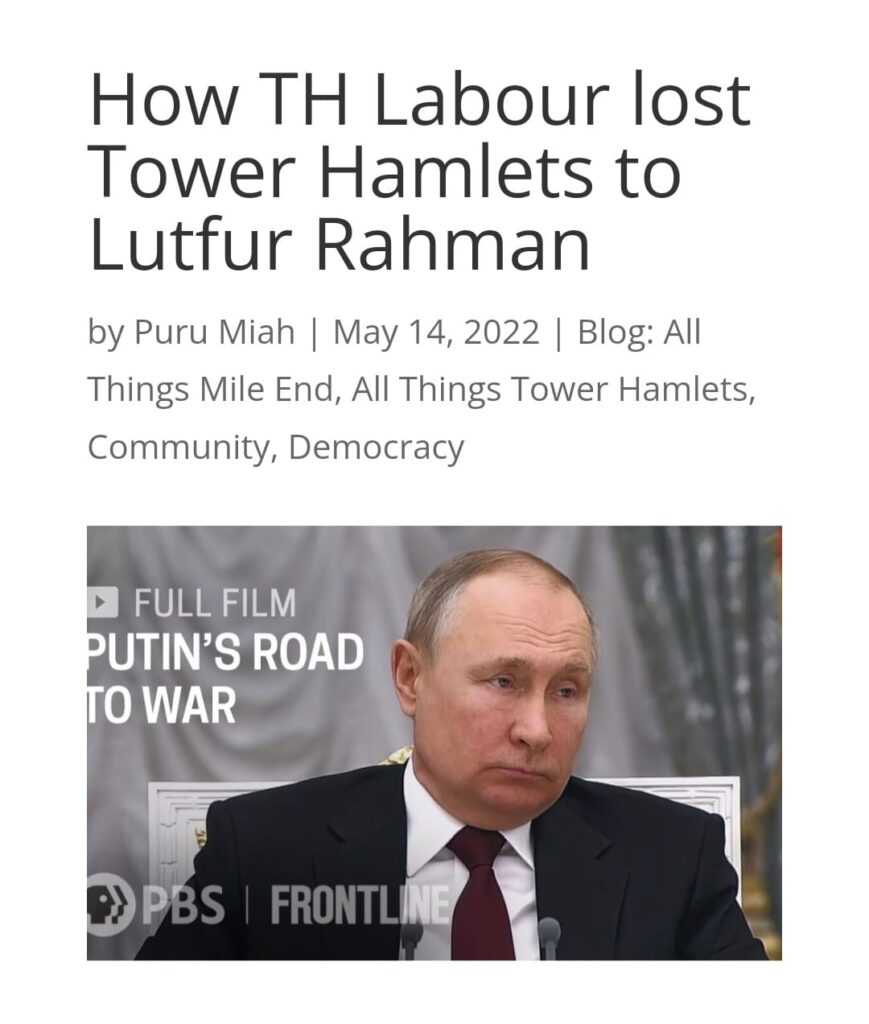
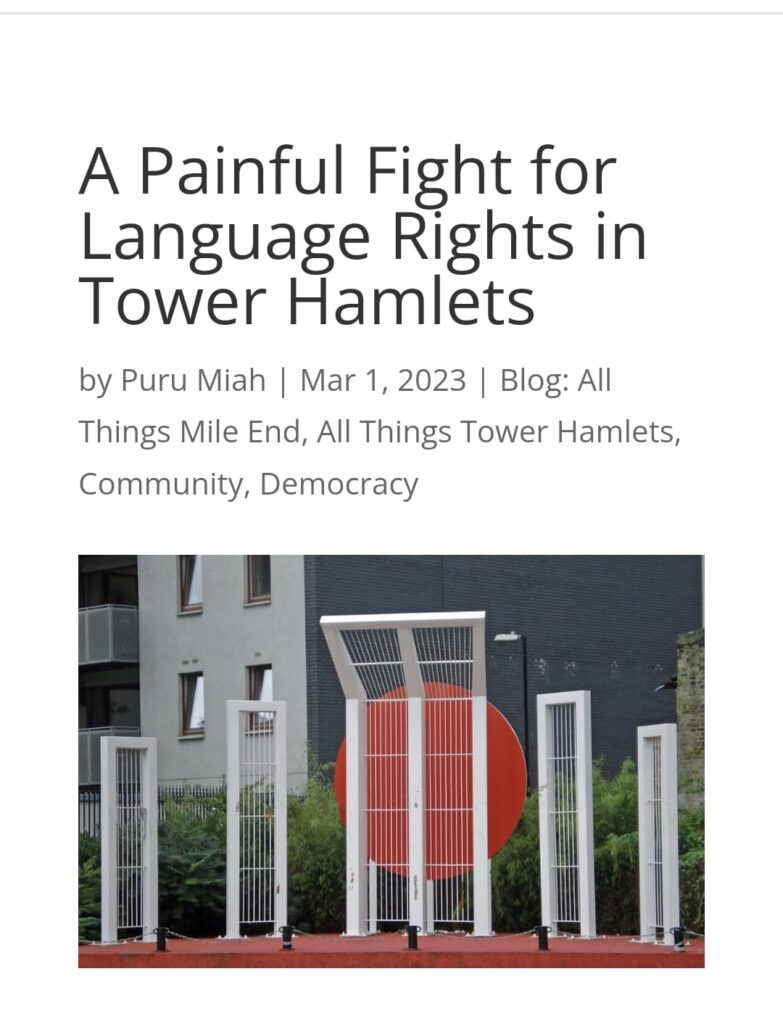
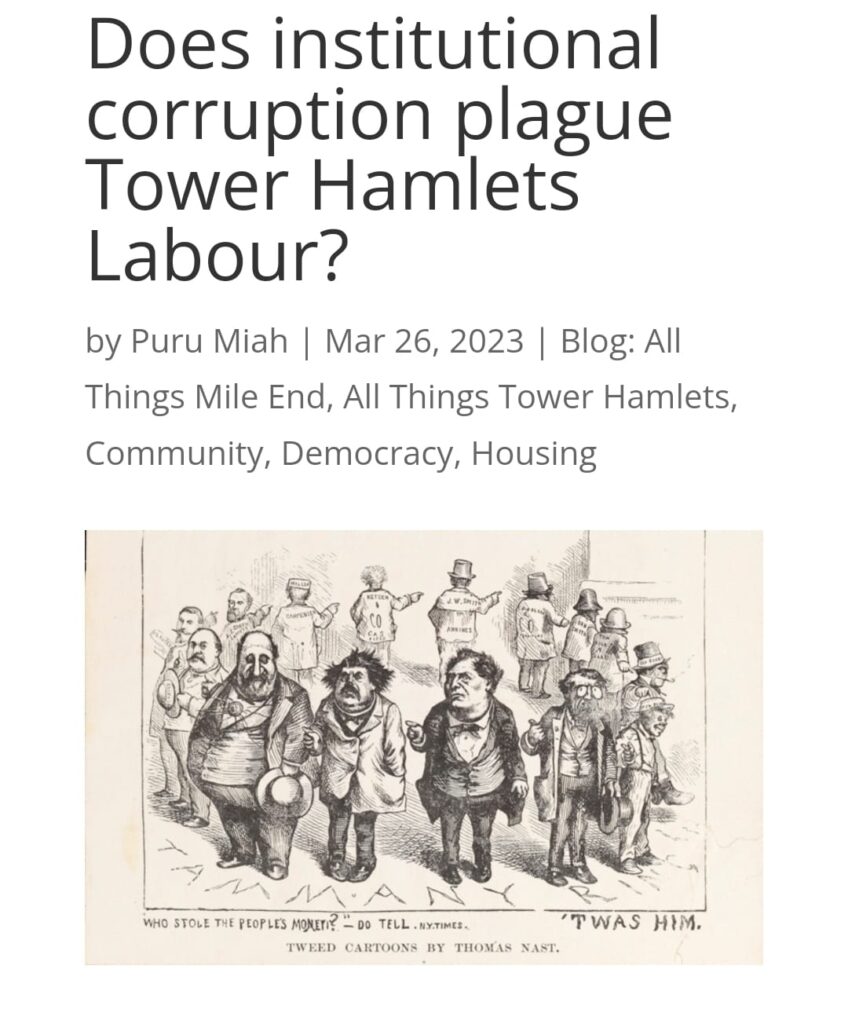





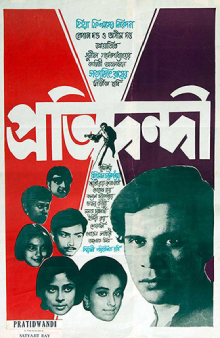
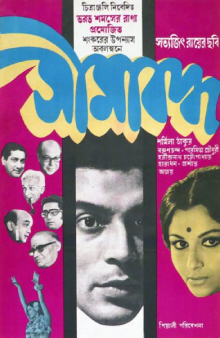

Recent Comments